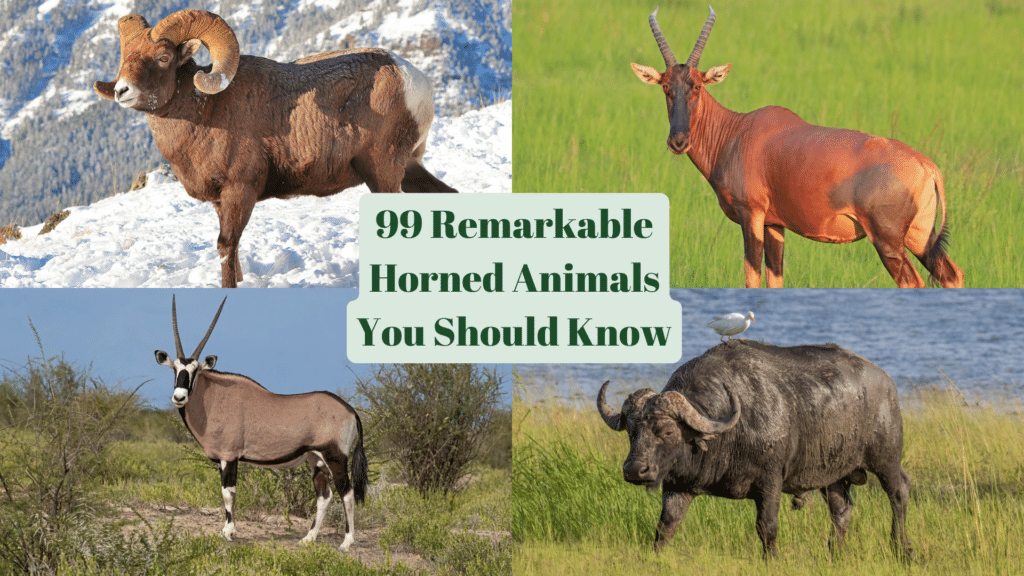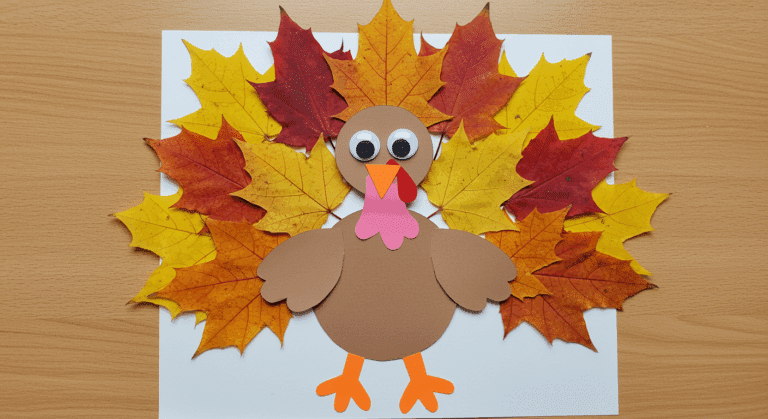In the vast tapestry of Earth’s wildlife, horned animals stand as living testament to nature’s artistic flair and evolutionary ingenuity.
These remarkable creatures, sporting everything from elegant spirals to formidable prongs, have captivated humans since ancient times.
From the nimble mountain goats dancing on precarious cliffs to the mighty rhinoceros commanding African savannas, horned animals have adapted to diverse habitats across the globe. Their headgear isn’t just for show these impressive structures serve as tools for survival, status symbols, and sometimes even musical instruments.
In this collection of 99 fascinating horned creatures, readers will explore both familiar faces and surprising species they never knew existed. Some might be garden visitors, while others remain elusive legends of distant lands.
Distinctive Horned Animals
1. African Buffalo
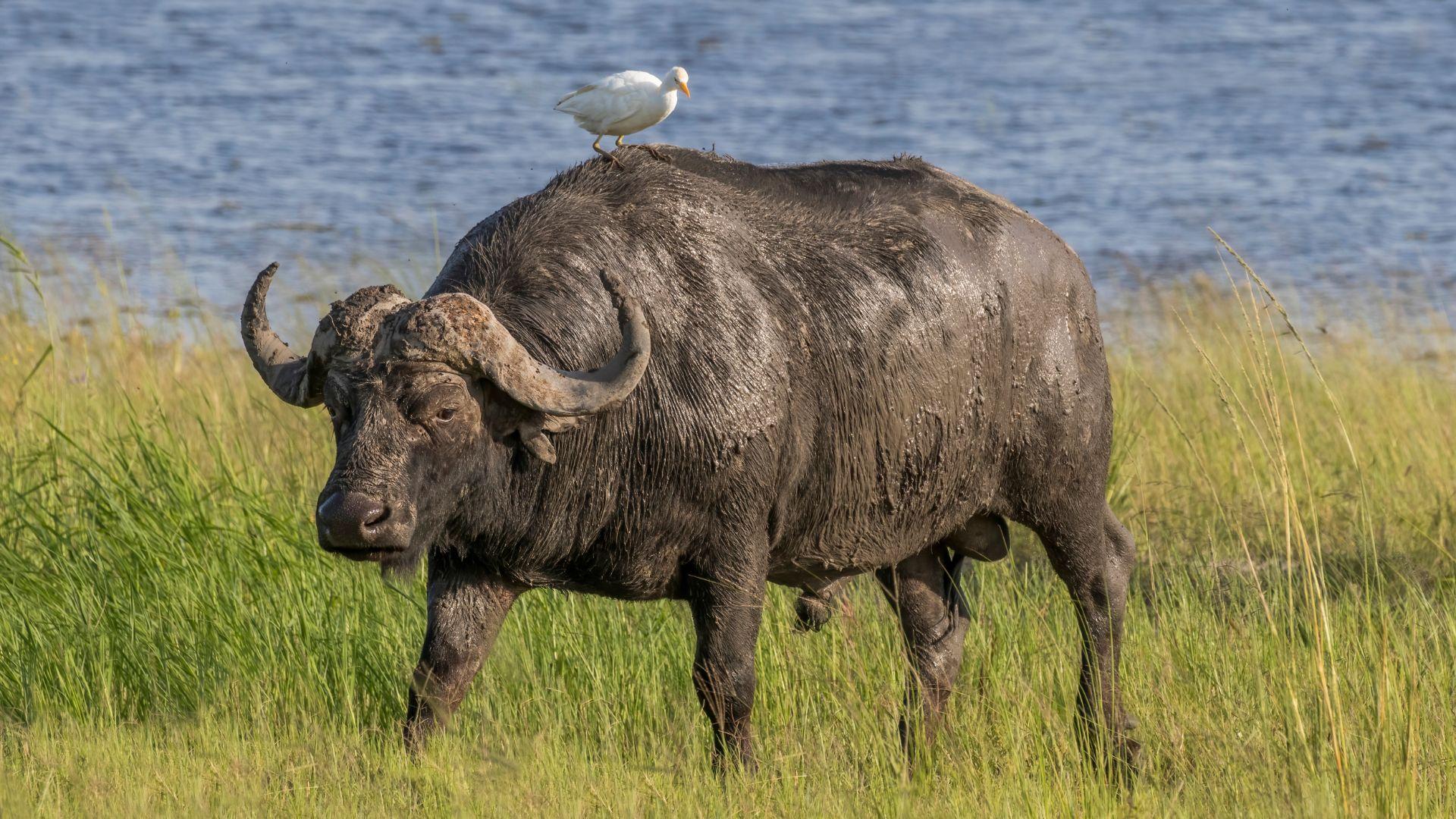
The African buffalo is a formidable giant of the African savanna, known for its massive curved horns and unpredictable temperament.
These powerful bovines move in large herds, cooperating to protect their young and face down predators like lions.
- Species: Cape Buffalo (Also called African Savanna Buffalo)
- Scientific Name: Syncerus caffer
- Food: Primarily grazers, feeding on coarse grasses and herbs found across African grasslands
2. Alpine Ibex
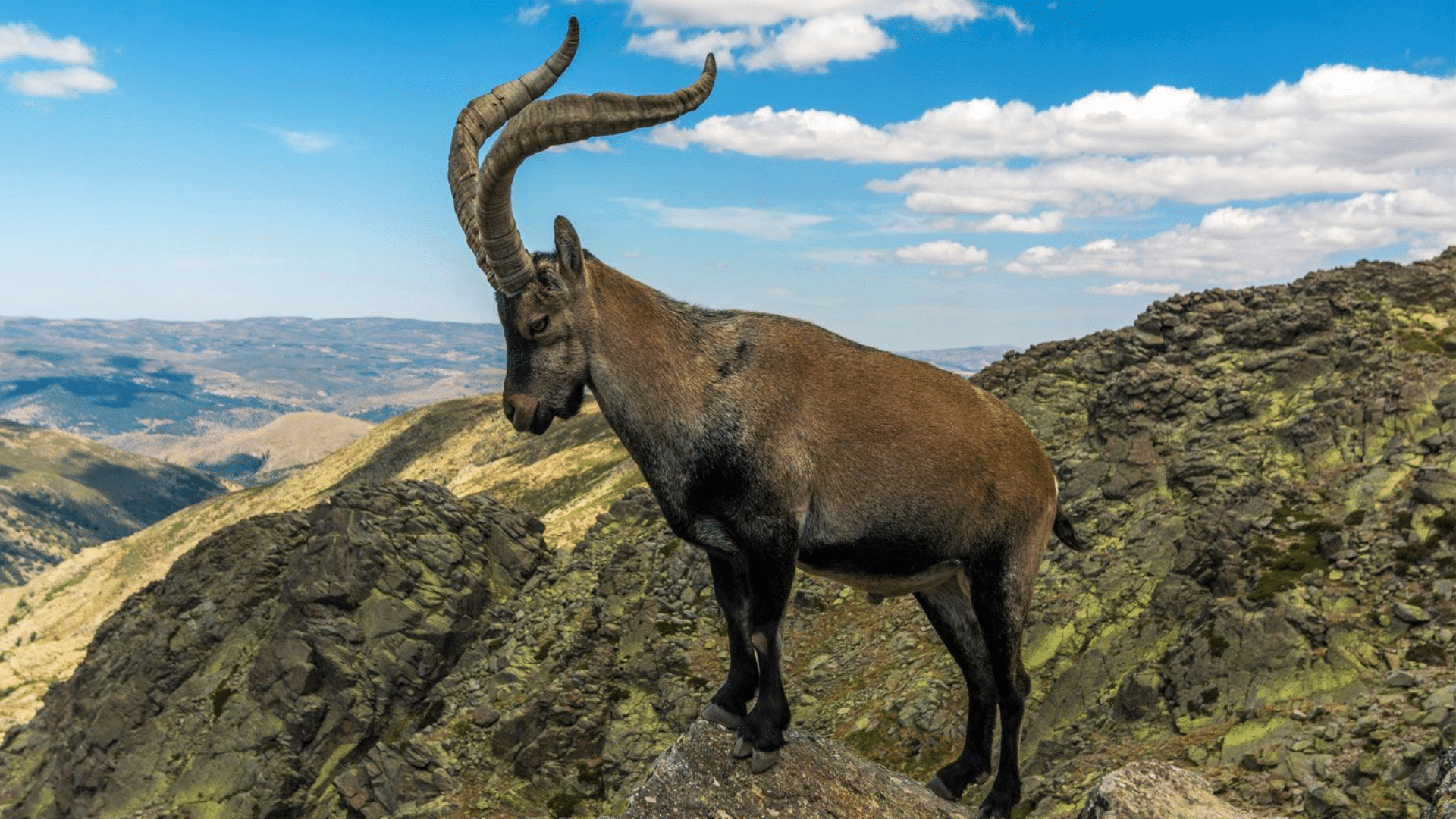
The Alpine Ibex, a masterful mountaineer, fearlessly navigates steep alpine cliffs with its massive backward-curving horns.
These remarkable wild goats can climb nearly vertical rock faces and survive harsh mountain winters at elevations exceeding 10,000 feet.
- Species: Wild Goat
- Scientific Name: Capra ibex
- Food Habit: Herbivore – primarily grazes on grass, leaves, twigs, and alpine vegetation during summer; switches to bark, lichen, and dry grass in winter
3. Ankole-Watusi
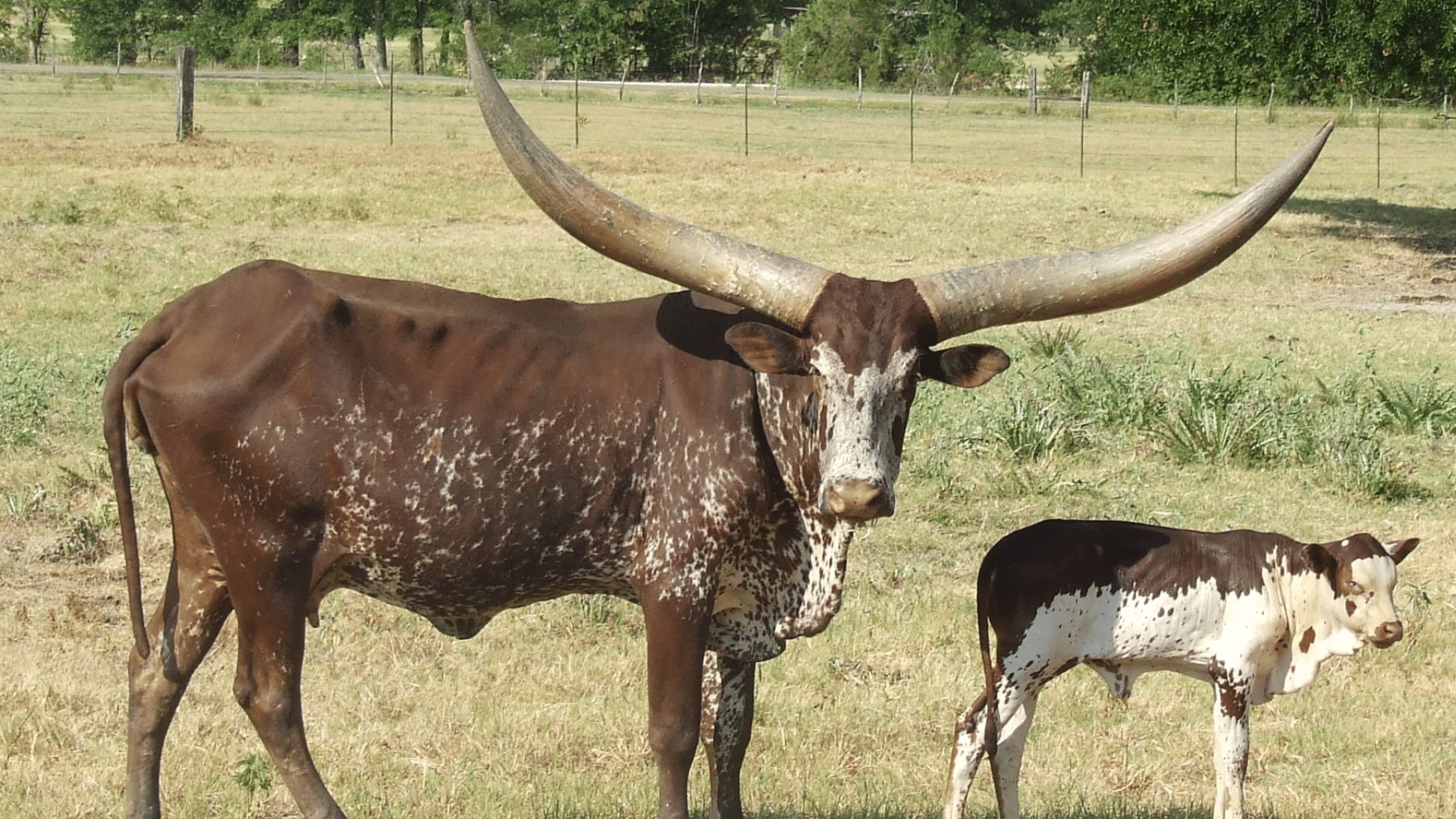
The Ankole-Watusi, often called the “Cattle of Kings,” is renowned for its massive, distinctive horns that can span up to 8 feet wide.
Native to Africa, these majestic creatures have been revered by local tribes for centuries as symbols of wealth and status.
- Species: Bovine
- Scientific Name: Bos taurus taurus
- Food Habit: Grazes primarily on grass, but also consumes leaves, herbs, and shrubs in their natural habitat
4. Arabian Oryx
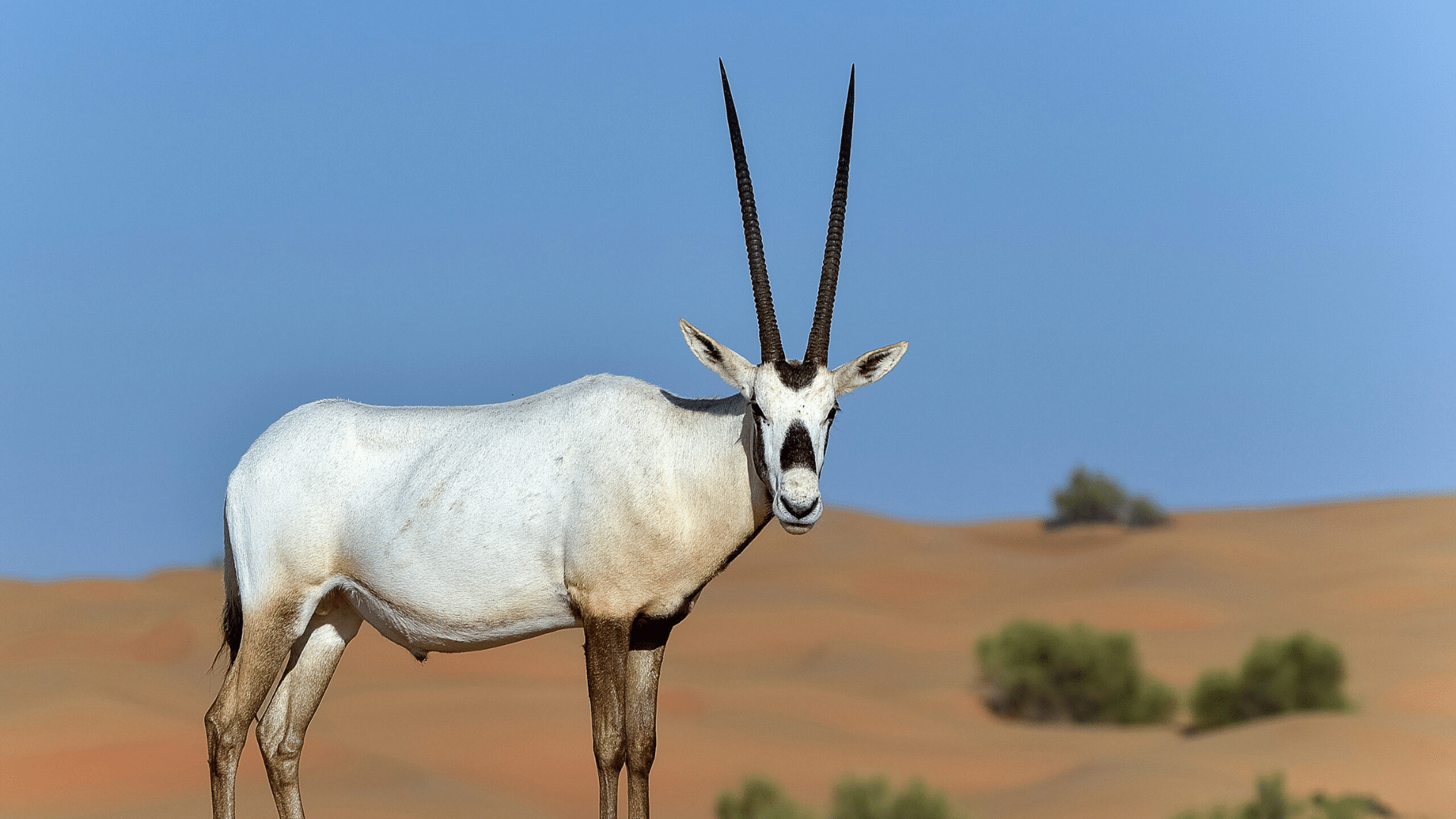
The Arabian Oryx boasts striking white fur and spectacular straight horns that can reach up to 30 inches in length.
Once extinct in the wild, this majestic desert dweller now roams free in protected areas, adapting masterfully to the harsh Arabian Peninsula’s conditions.
- Species: Antelope
- Scientific Name: Oryx leucoryx
- Food Habit: Grazes mainly on grasses but also feeds on shrubs, herbs, and roots
5. Asian Water Buffalo
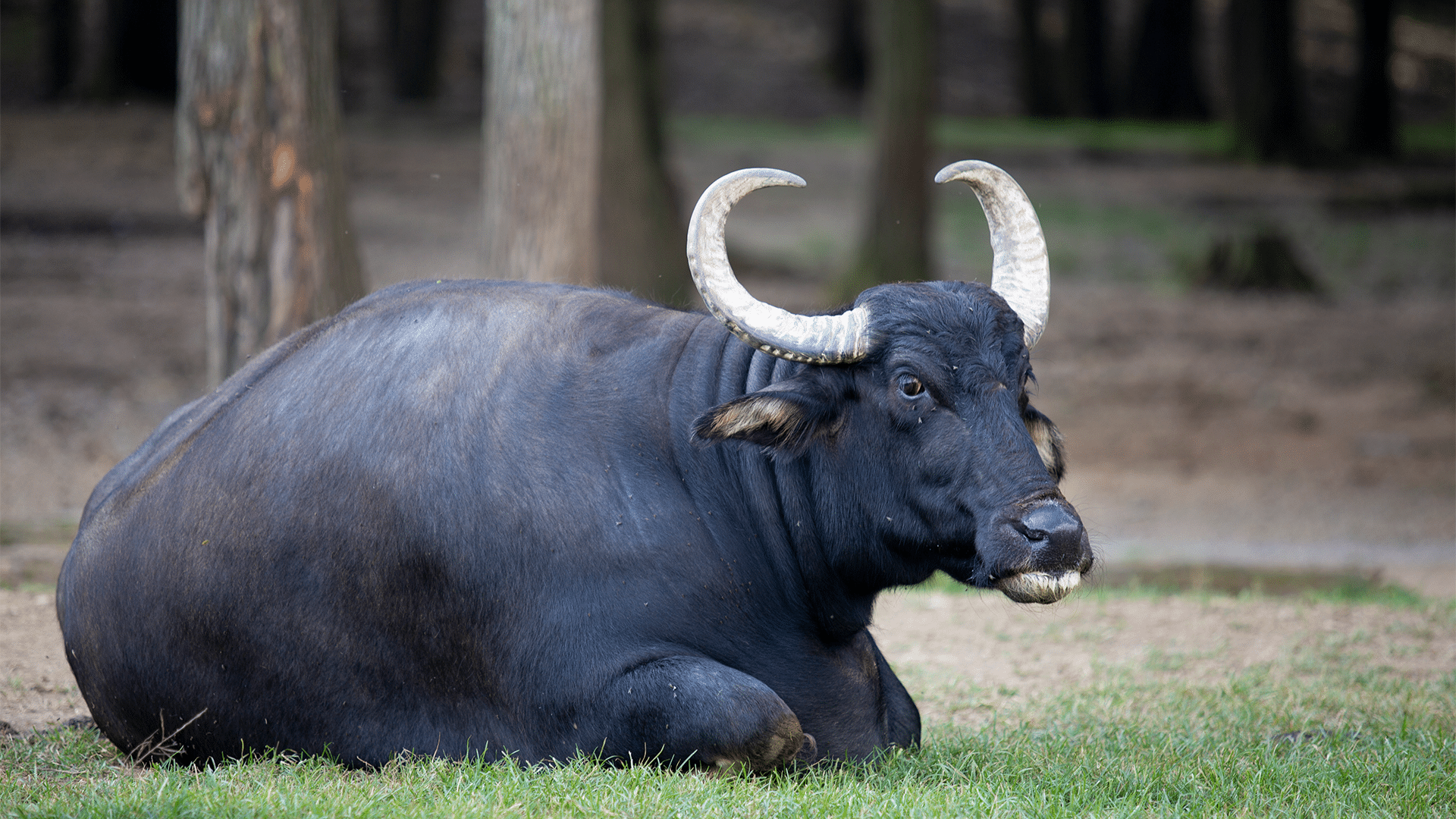
Asian water buffalo are massive, slate-gray bovines with impressive curved horns that can span up to 6 feet wide.
These social creatures spend their days wallowing in muddy waters to stay cool and protect their sensitive skin from the harsh sun.
- Species: Wild Water Buffalo
- Scientific Name: Bubalus bubalis
- Food Habit: Primarily grazers that feed on grasses, aquatic plants, and reeds found in wetlands and grasslands
6. Bighorn Sheep
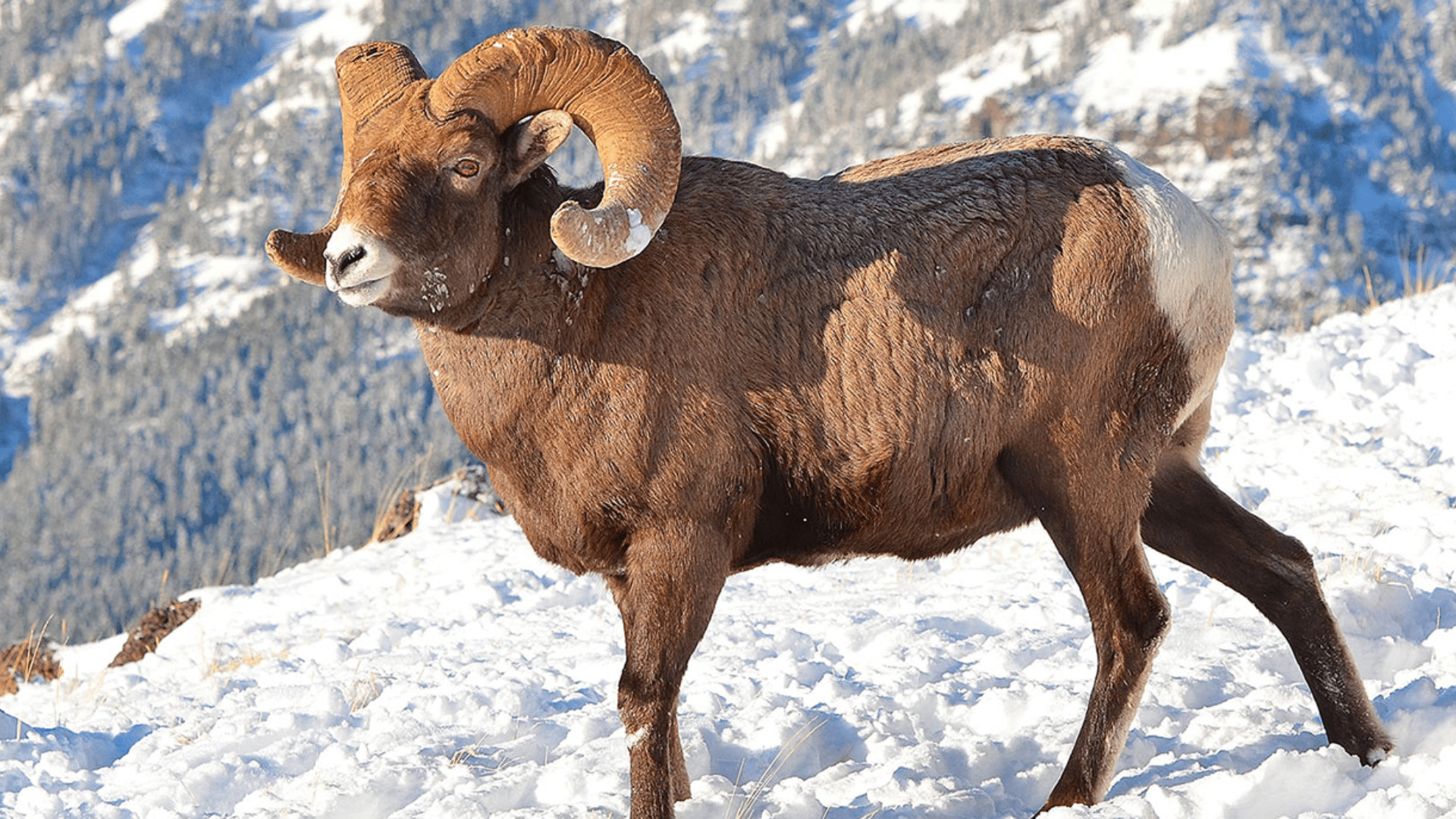
North America’s Bighorn Sheep are masterful mountaineers, famous for their massive curved horns and incredible climbing abilities.
These social animals gather in herds, tackling steep rocky cliffs with astonishing agility and using their keen eyesight to spot predators from afar.
- Species: Mountain Sheep (Desert and Rocky Mountain subspecies)
- Scientific Name: Ovis canadensis
- Food Habit: They are herbivores, primarily grazing on grasses but also consuming plants, leaves, and shoots during different seasons
7. Blackbuck
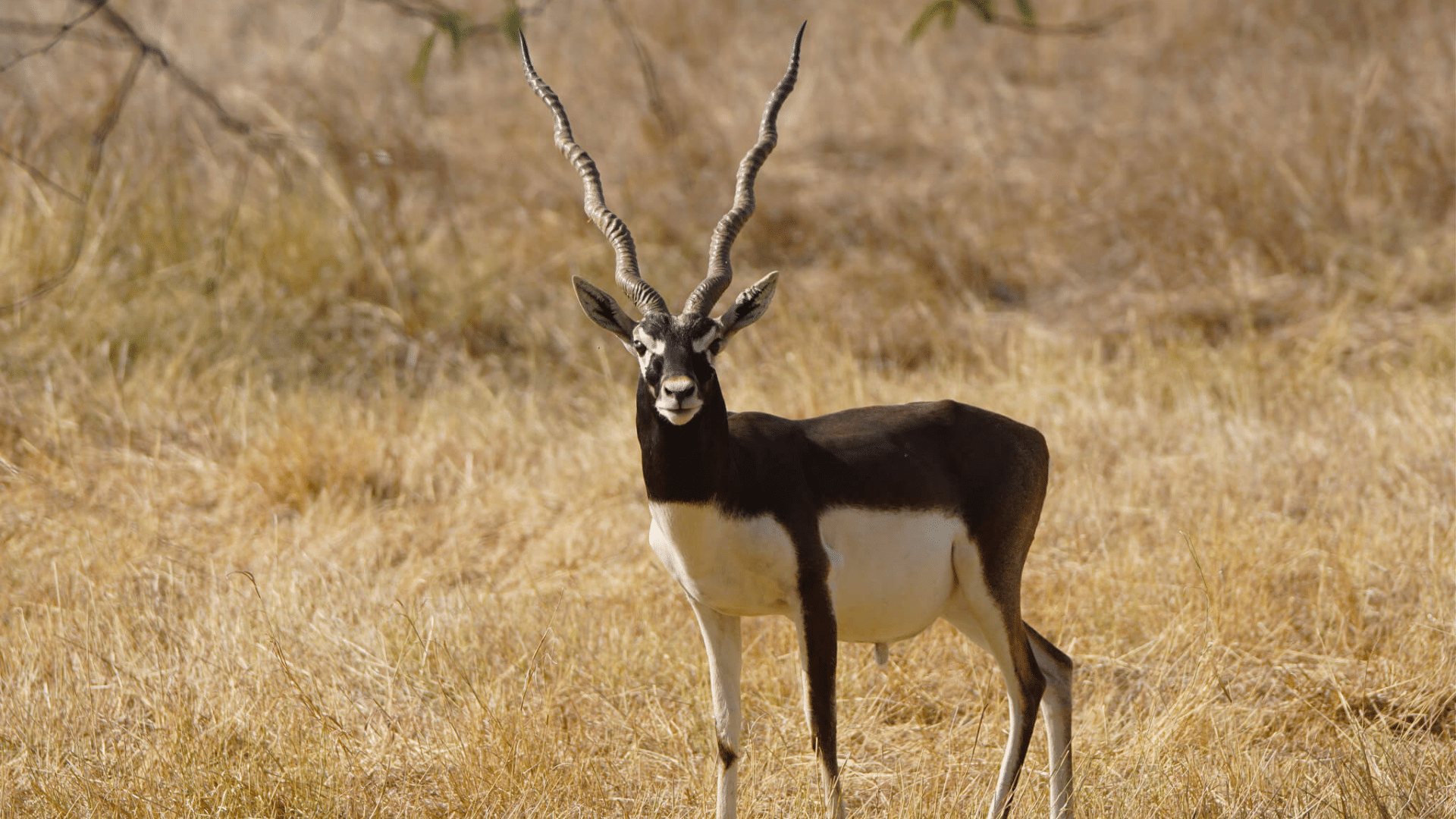
The blackbuck, India’s fastest antelope, is a sight to behold with its distinctive spiral horns and striking coat.
Males display a rich black and white coloration, while females maintain a tawny hue, making them a true marvel of the grasslands.
- Species: Antelope
- Scientific Name: Antilope cervicapra
- Food Habit: Primarily grazes on grass, but also enjoys herbs and protein-rich pods
8. Blue Wildebeest
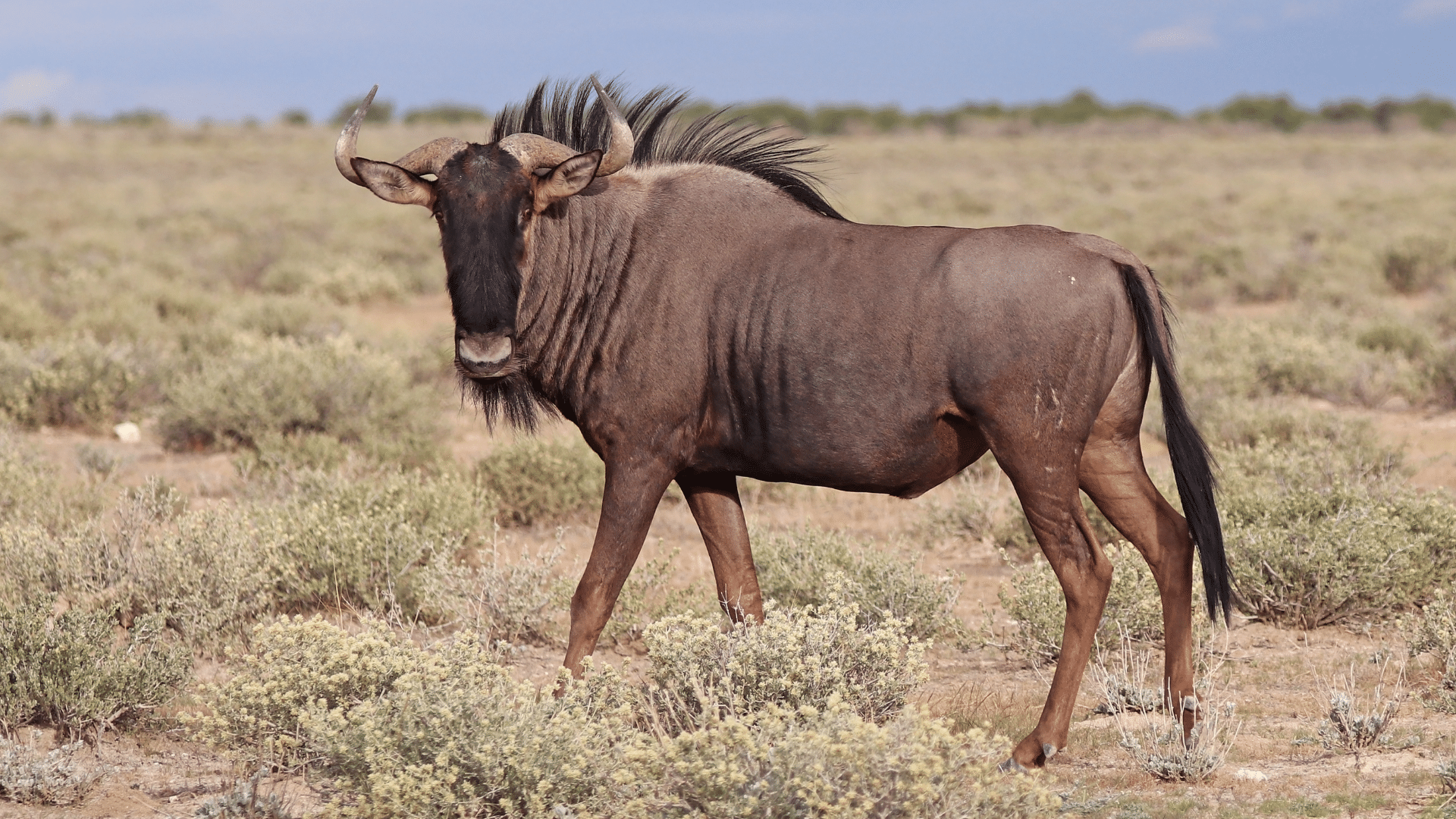
The Blue Wildebeest, with its distinctive gray-blue coat and shaggy beard, roams the African savannas in massive herds.
These sturdy animals are known for their extraordinary stamina during migration, covering vast distances while dodging predators with remarkable agility.
- Species: Antelope
- Scientific Name: Connochaetes taurinus
- Food: Primarily grazes on short grasses, but also consumes herbs and shrubs when grass is scarce
9. Bongo
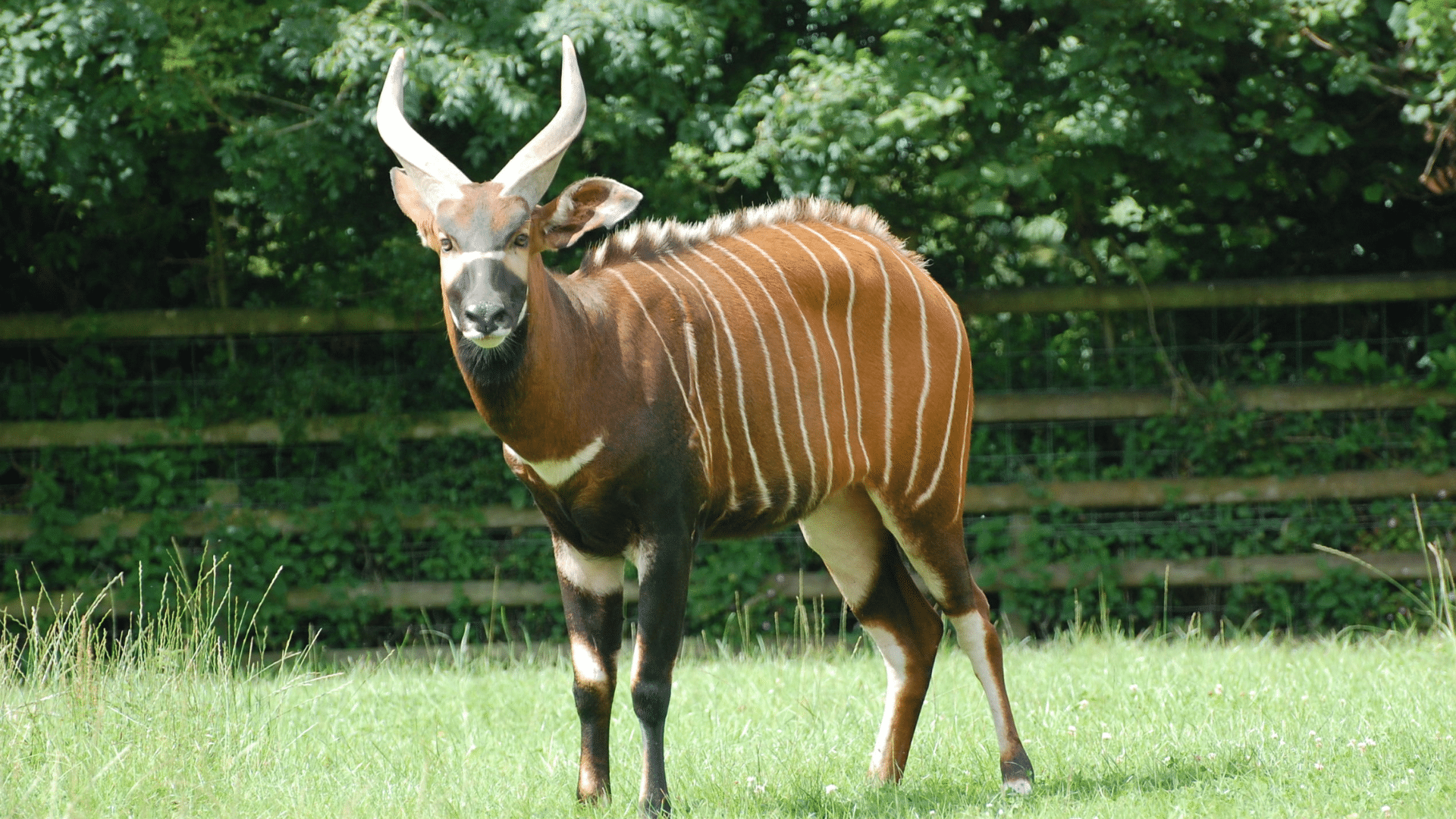
The bongo is a striking, reddish-brown antelope with white stripes, native to African forests. Shy yet powerful, it thrives in dense vegetation.
With keen senses and strong legs, it swiftly navigates its habitat, avoiding predators with agility.
- Species: Eastern bongo
- Scientific Name: Tragelaphus eurycerus
- Food Habit: Herbivorous – feeds on leaves, shoots, fruits, and bark
10. Chamois
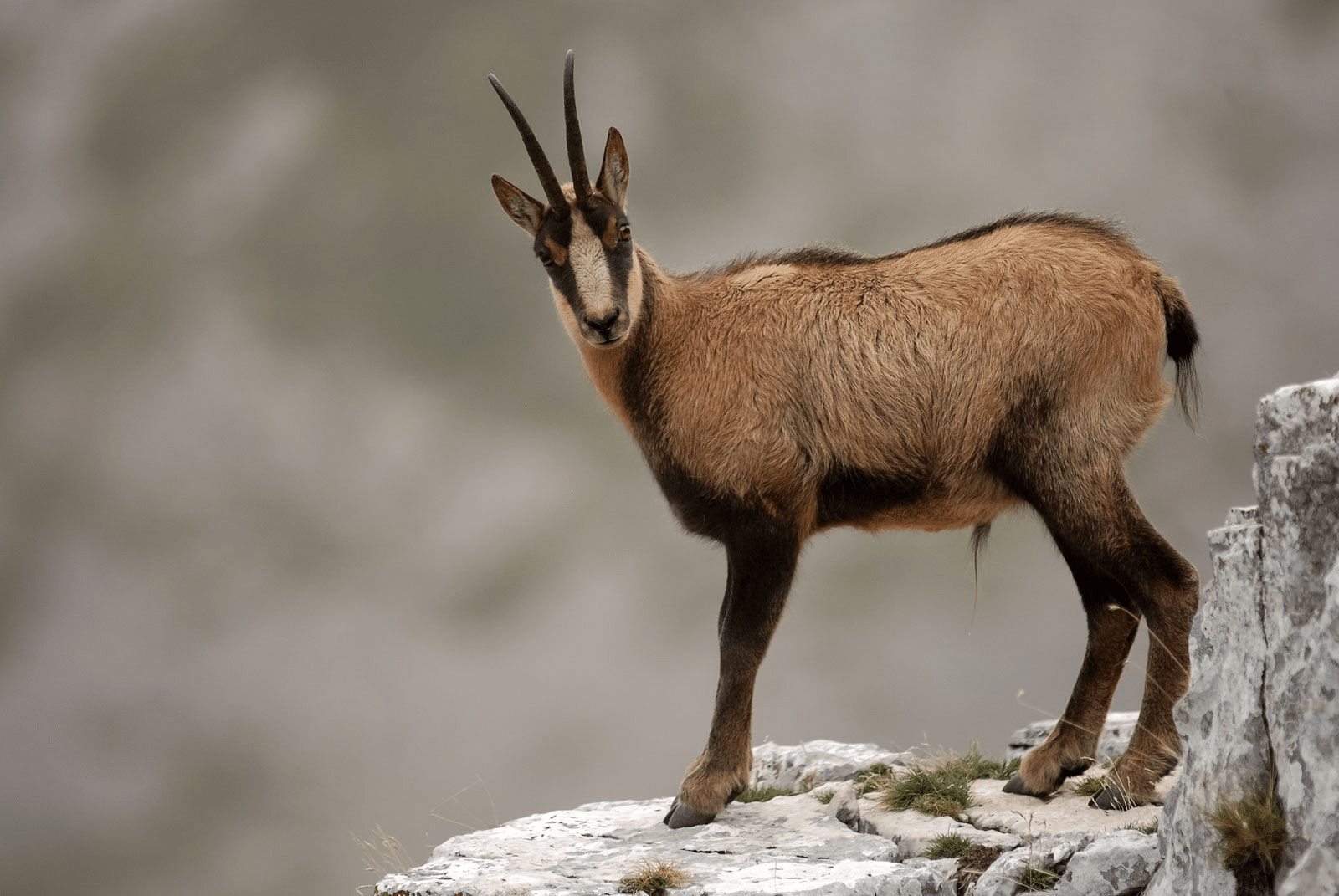
The Blue Chamois is a hoofed mountain dweller with distinctive curved horns and a striking bluish-gray winter coat. These agile creatures are masters of their steep alpine habitat, effortlessly navigating rocky terrains while foraging for food in small groups.
- Species: Goat-Antelope
- Scientific Name: Rupicapra rupicapra
- Food Habit: Primarily herbivorous, feeding on mountain herbs, grasses, shoots, and leaves during summer months.
11. Eland
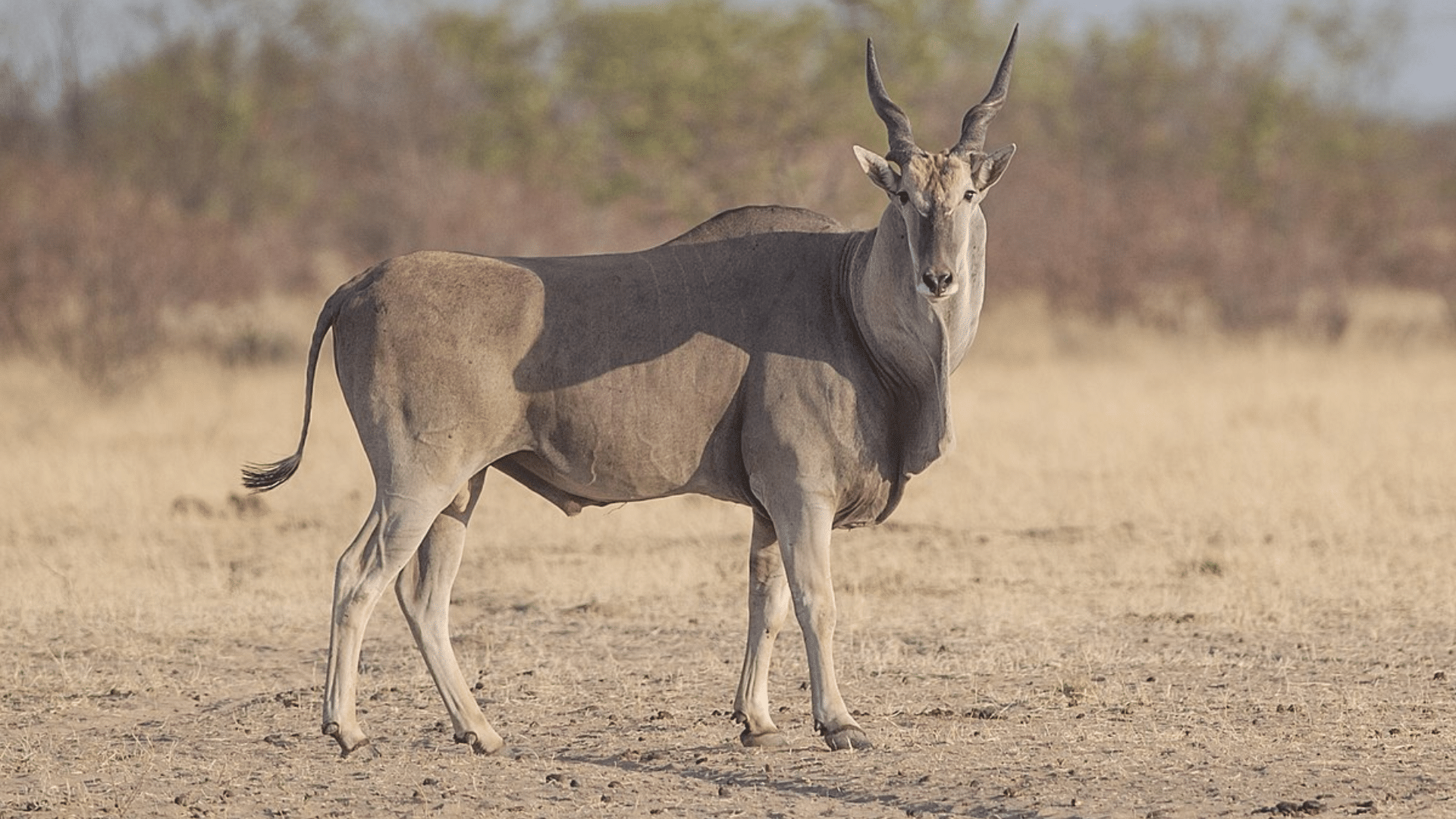
The Eland, Africa’s largest antelope, is a surprisingly agile giant that can leap over 4 feet high despite weighing up to 2,200 pounds.
With their distinctive twisted horns and loose skin dewlap, these gentle browsers showcase nature’s perfect blend of power and grace.
- Species: Common Eland, Giant Eland
- Scientific Name: Taurotragus oryx (Common Eland), Taurotragus derbianus (Giant Eland)
- Food Habit: They are mainly browsers, feeding on leaves, fruits, and succulent plants, but will occasionally graze on grass
12. Four-Horned Antelope
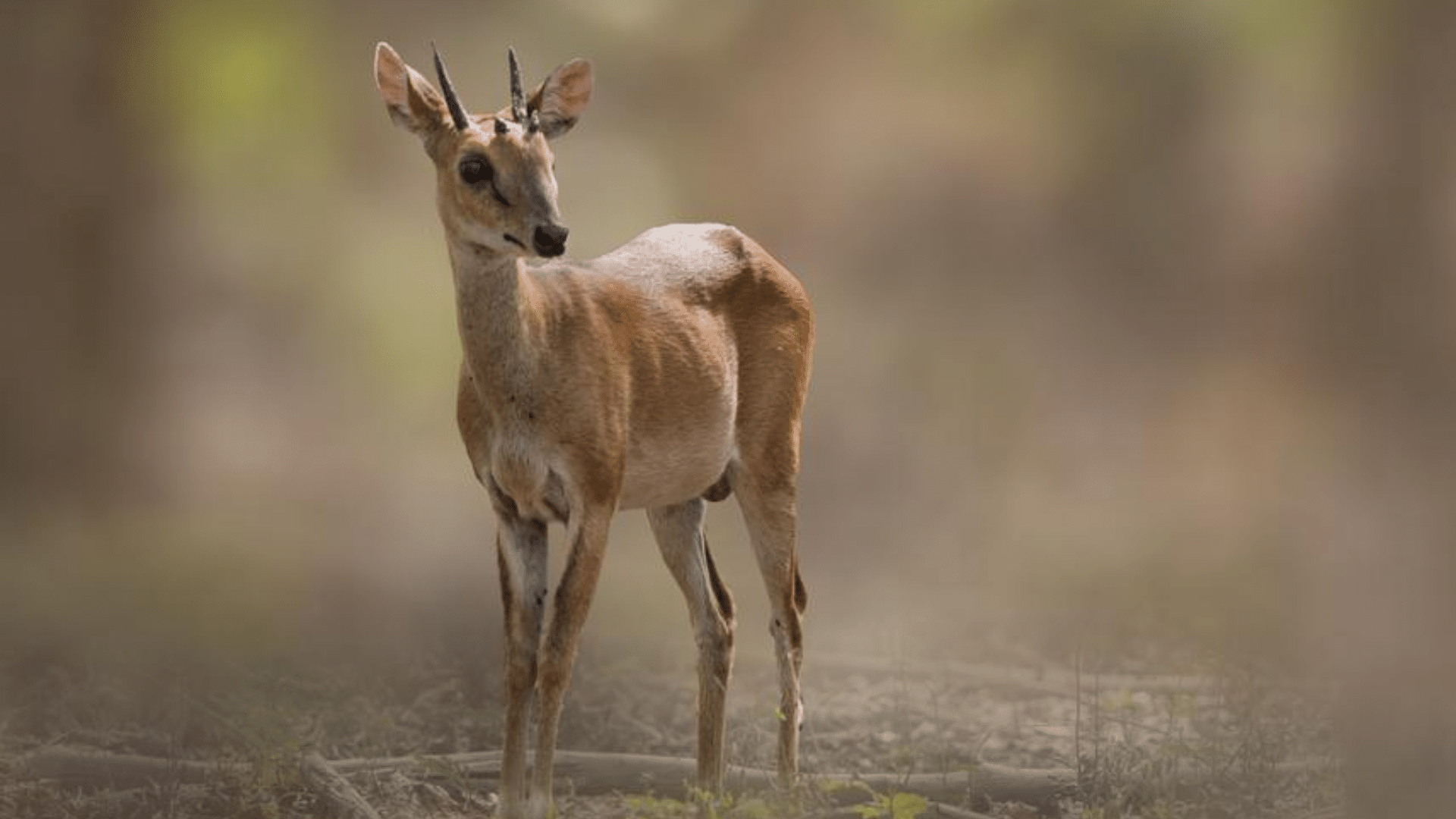
The Four-horned Antelope, a unique deer-sized creature, boasts two pairs of distinctive horns – a rarity among wild bovids.
Native to India and Nepal, these shy browsers prefer dense forest undergrowth and are most active during dawn and dusk.
- Species: Tetracerus quadricornis
- Scientific Name: Tetracerus quadricornis
- Food: Primarily feeds on grass, leaves, fruits, and flowers, especially from herbs like Helicteres isora and Acacia nilotica
13. Gemsbok
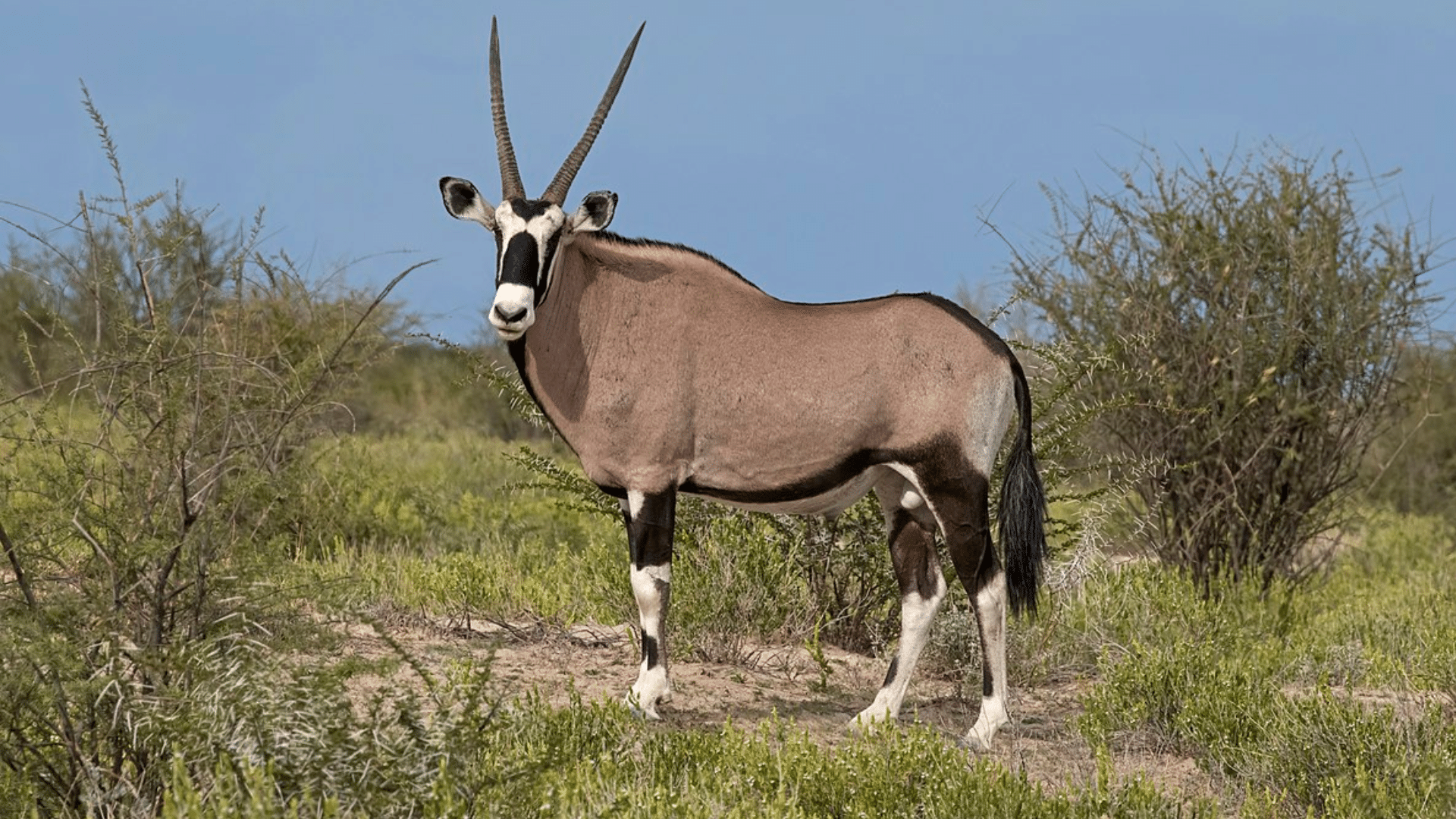
The Gemsbok, a striking antelope of southern Africa, commands attention with its distinctive black-and-white face mask and impressive rapier-like horns.
Built for desert life, these remarkable animals can survive weeks without drinking water, getting moisture from their plant-based diet.
- Species: Antelope
- Scientific Name: Oryx gazella
- Food Habit: They are browsers and grazers, feeding primarily on leaves, fruits, and grasses, with a particular fondness for tsamma melons during dry seasons
14. Greater Kudu
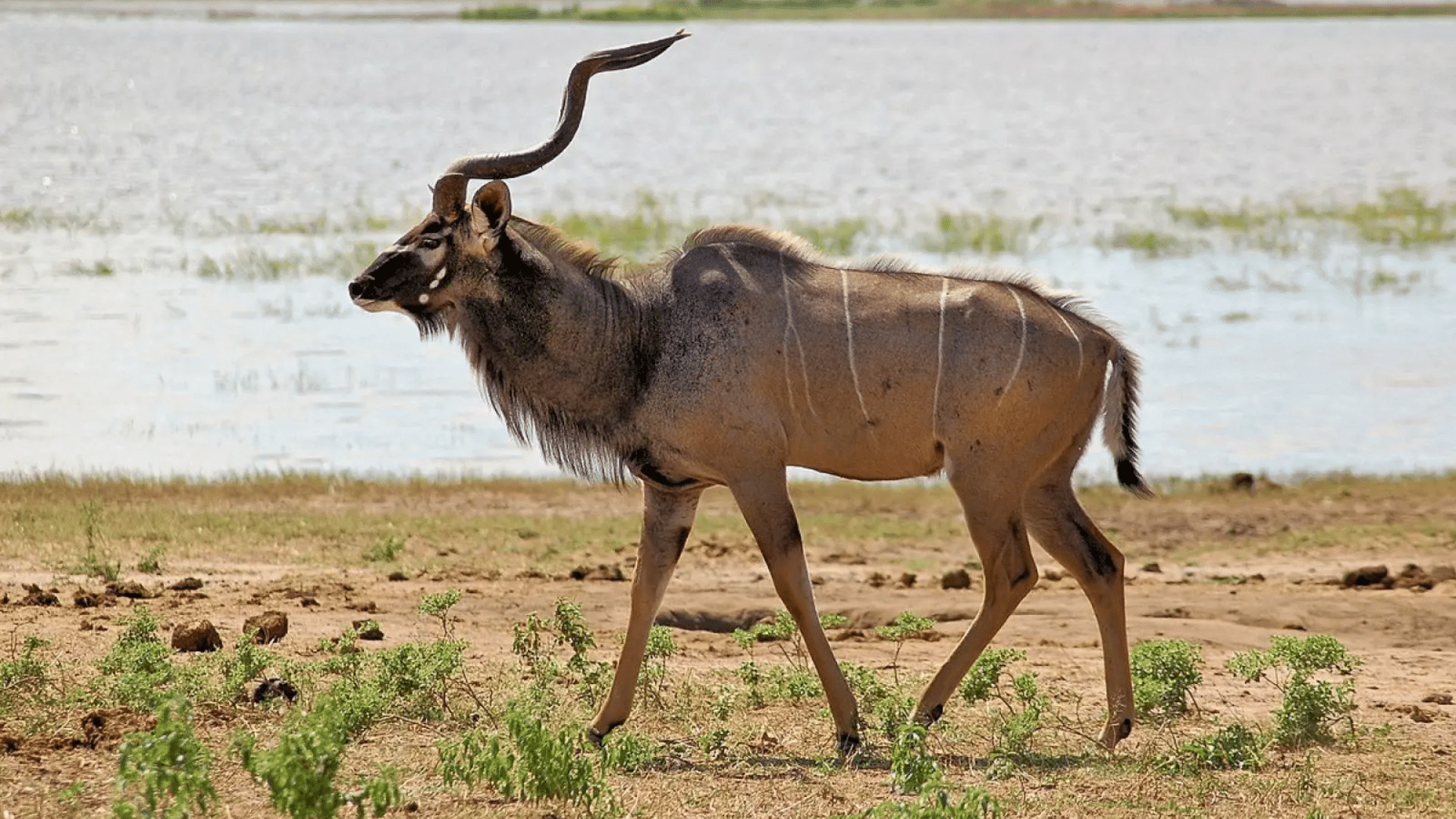
The Greater Kudu is a majestic antelope found in eastern and southern Africa.
Known for its long, spiraled horns and striking white stripes, it thrives in woodlands and savannas, using its agility to evade predators.
- Species: Greater Kudu
- Scientific Name: Tragelaphus strepsiceros
- Food Habit: Herbivore; feeds on leaves, shoots, fruits, and grasses
15. Himalayan Tahr
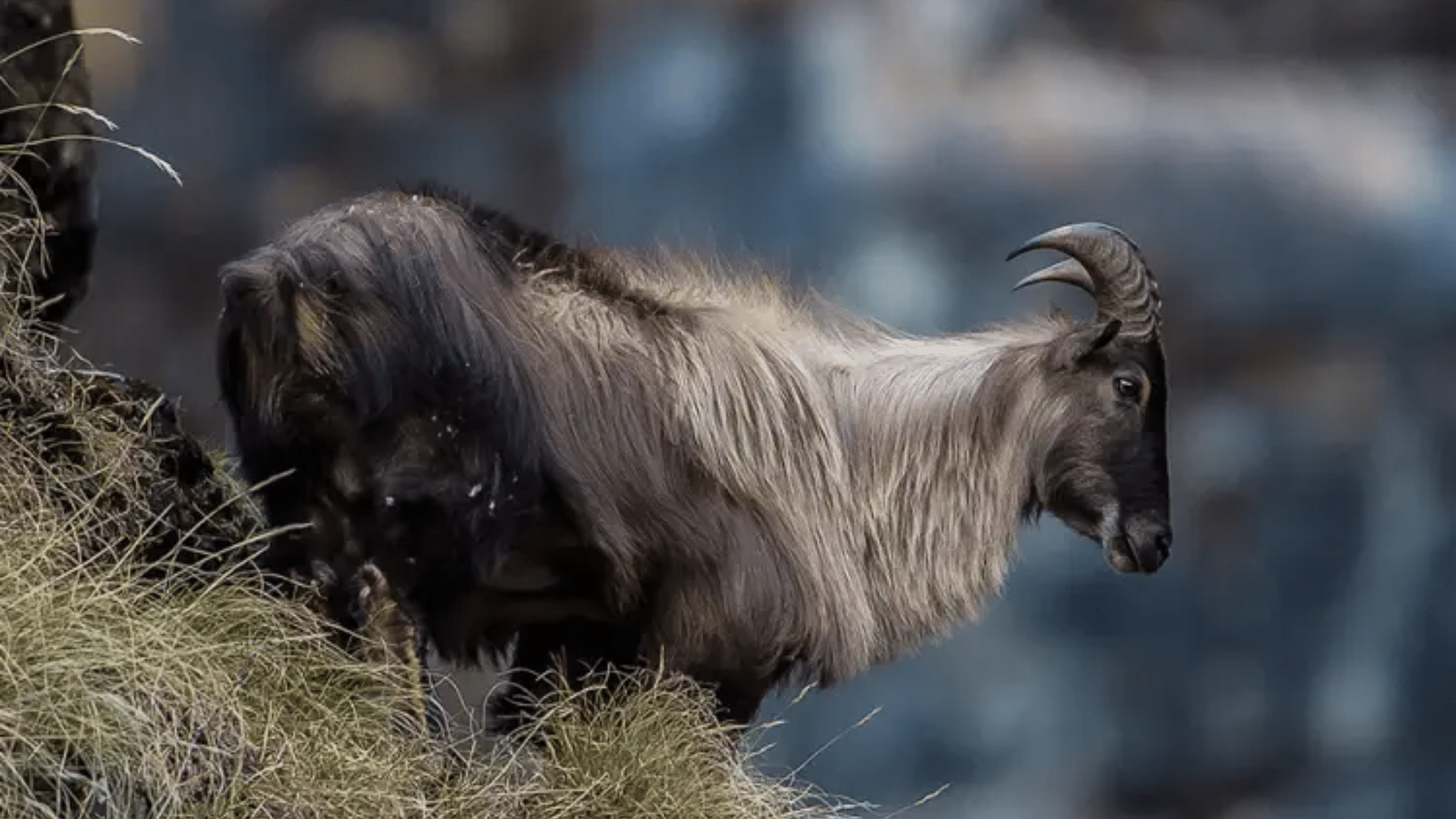
The Himalayan Tahr, a wild goat native to the Himalayas, thrives in steep, rugged terrains.
With thick reddish-brown fur and curved horns, it’s well-adapted to harsh climates.These agile climbers are crucial to their ecosystem, shaping vegetation through grazing.
- Species: Himalayan Tahr
- Scientific Name: Hemitragus jemlahicus
- Food Habit: Herbivorous, primarily feeding on grasses, shrubs, and leaves
16. Impala
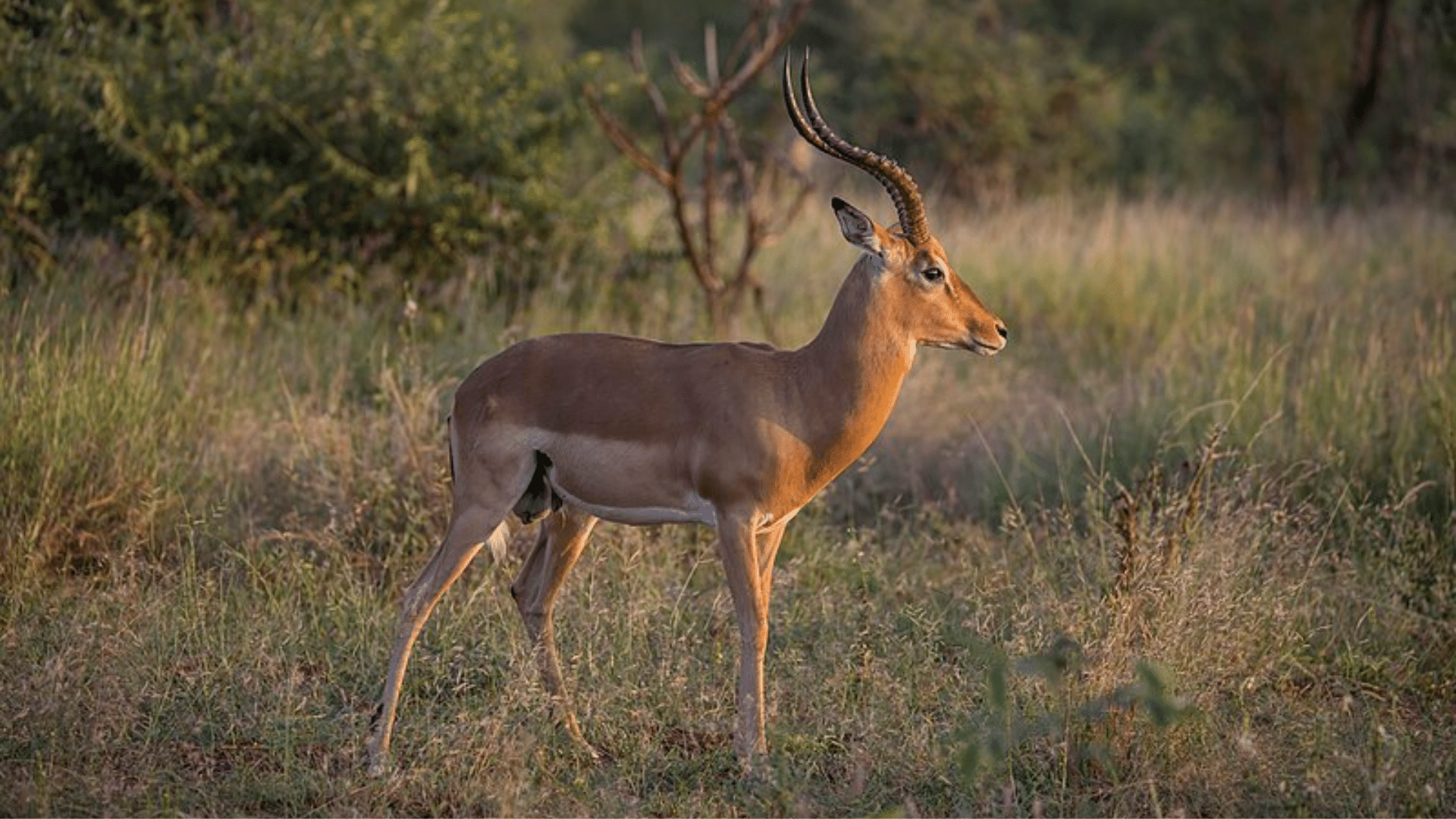
The impala is a graceful, medium-sized antelope native to Africa. Known for its agility and speed, it thrives in savannas and woodlands.
With a reddish-brown coat and lyre-shaped horns, impalas are social animals that rely on keen senses to evade predators.
- Species: Aepyceros melampus
- Scientific Name: Aepyceros melampus
- Food Habit: Herbivorous – primarily grazes on grasses but also browses on shrubs and leaves when necessary.
17. Markhor
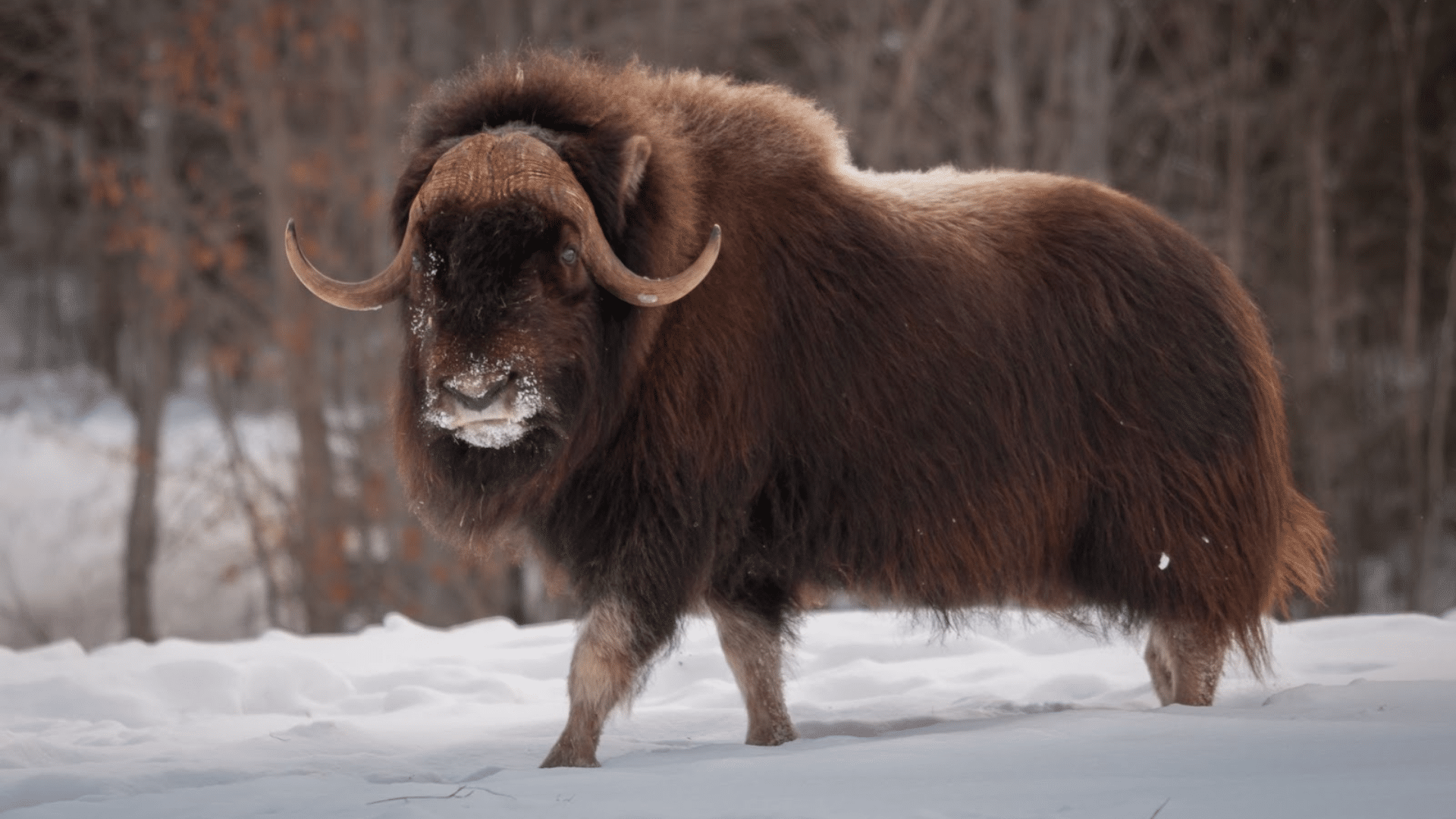
The Markhor, Pakistan’s national animal, is a majestic wild goat known for its twisted horns and incredible climbing skills.
Found in rugged mountainous regions, this elusive creature plays a crucial role in its ecosystem, balancing vegetation and predator populations.
- Species: Capra falconeri
- Scientific Name: Capra falconeri
- Food Habit: Herbivorous—feeds on grass, leaves, and shrubs
18. Mouflon
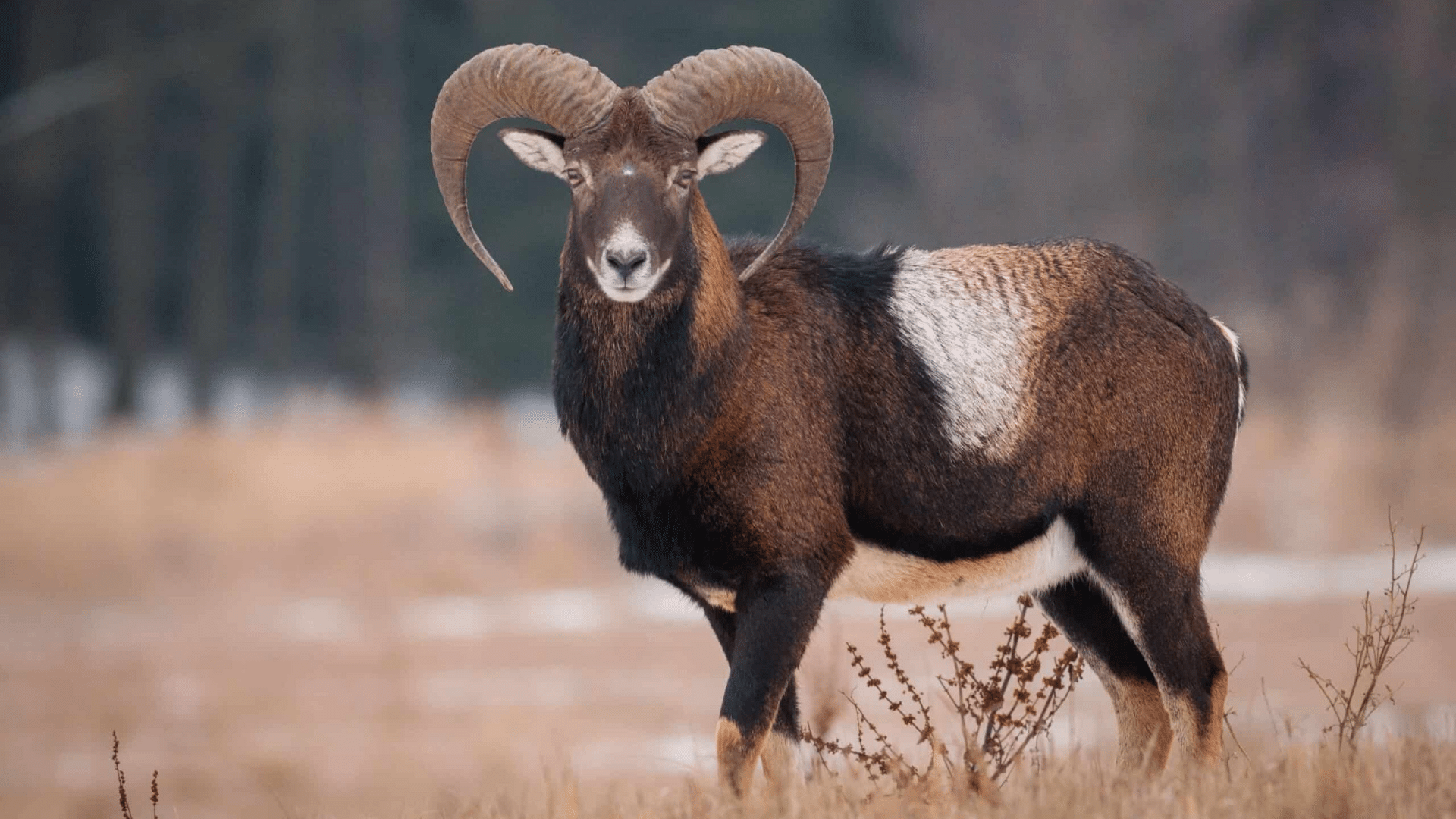
The mouflon is a wild sheep species native to Europe and western Asia.
Recognized by its reddish-brown coat and curved horns, it thrives in mountainous terrains. Agile climbers, these hardy animals play a crucial role in their ecosystems.
- Species: Ovis orientalis
- Scientific Name: Ovis orientalis
- Food Habit: Herbivorous, primarily grazing on grasses, shrubs, and leaves
19. Muskox
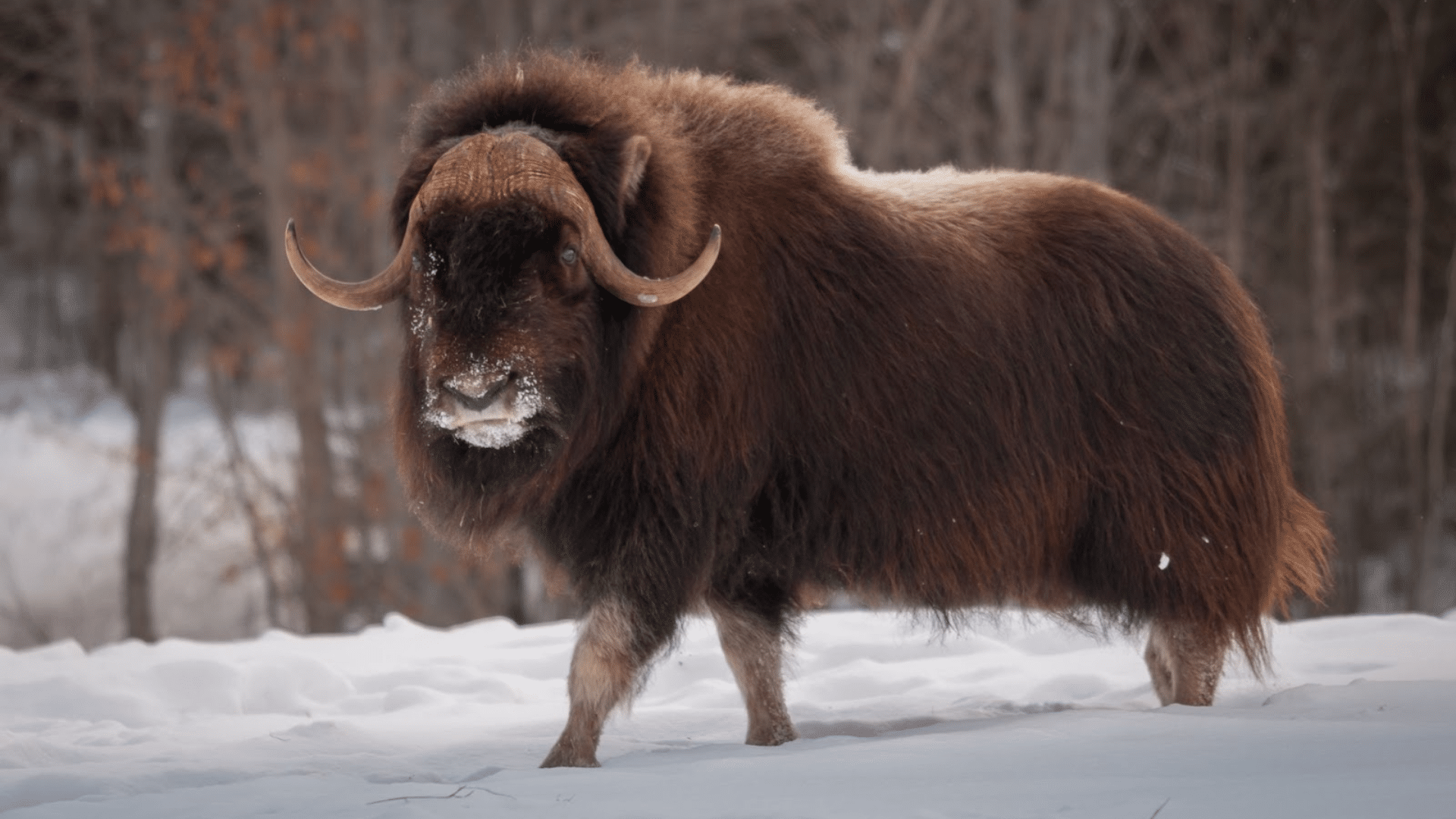
The muskox, a shaggy, cold-weather powerhouse, roams Arctic tundras in tight herds.
Armed with thick coats and curved horns, these resilient grazers fend off predators and brutal winters. They charge when threatened but prefer a peaceful, grass-filled existence.
- Species: Ovibovini (part of the Bovidae family)
- Scientific Name: Ovibos moschatus
- Food Habit: Primarily herbivorous, grazing on grasses, lichens, and Arctic willows
20. Nilgai
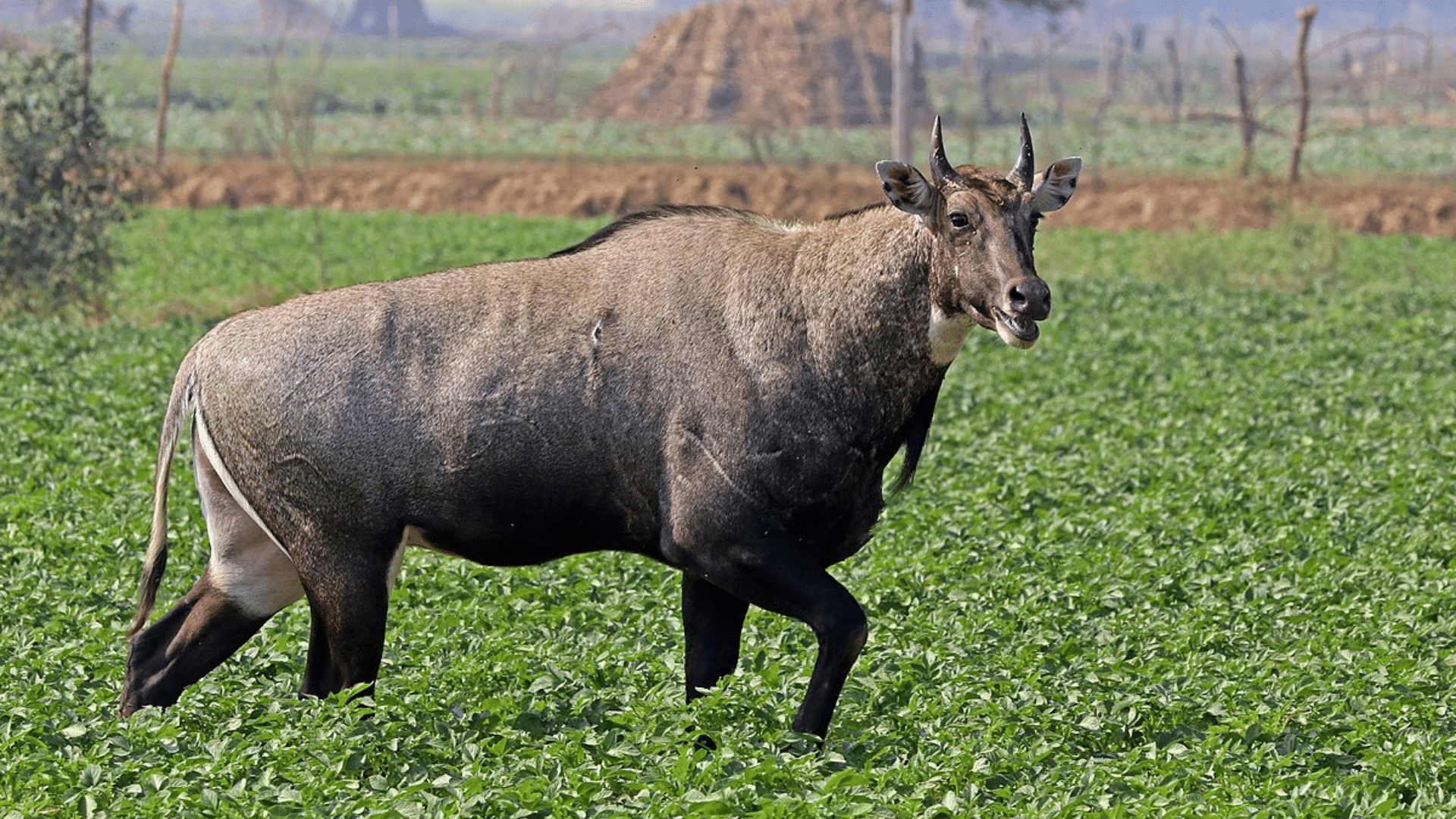
The Nilgai, or blue bull, is the largest Asian antelope, native to the Indian subcontinent. Males have a bluish-gray coat, while females are tawny brown.
Fast runners and herbivorous, they thrive in grasslands and woodlands, often near water sources.
- Species: Boselaphus tragocamelus
- Scientific Name: Boselaphus tragocamelus
- Food Habit: Herbivorous – feeds on grasses, leaves, fruits, and crops
21. Nubian Ibex
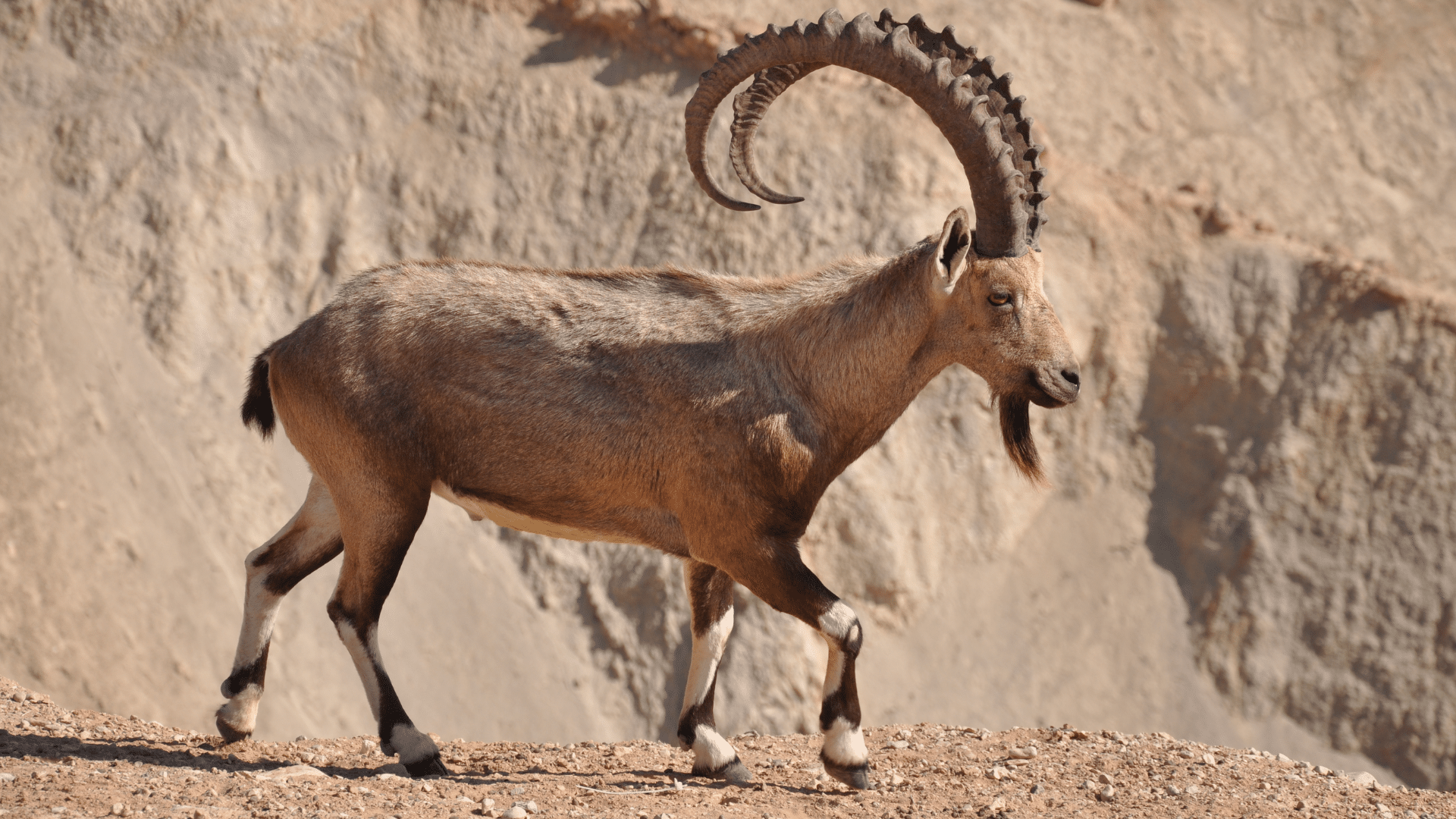
The Nubian ibex is a desert-dwelling goat known for its impressive climbing skills and curved horns. Found in rocky terrains of North Africa and the Middle East, this agile herbivore thrives in harsh conditions, using cliffs for protection from predators.
- Species: Nubian ibex
- Scientific Name: Capra nubiana
- Food Habit: Primarily feeds on grasses, leaves, and shrubs, adapting to scarce desert vegetation.
22. Pronghorn
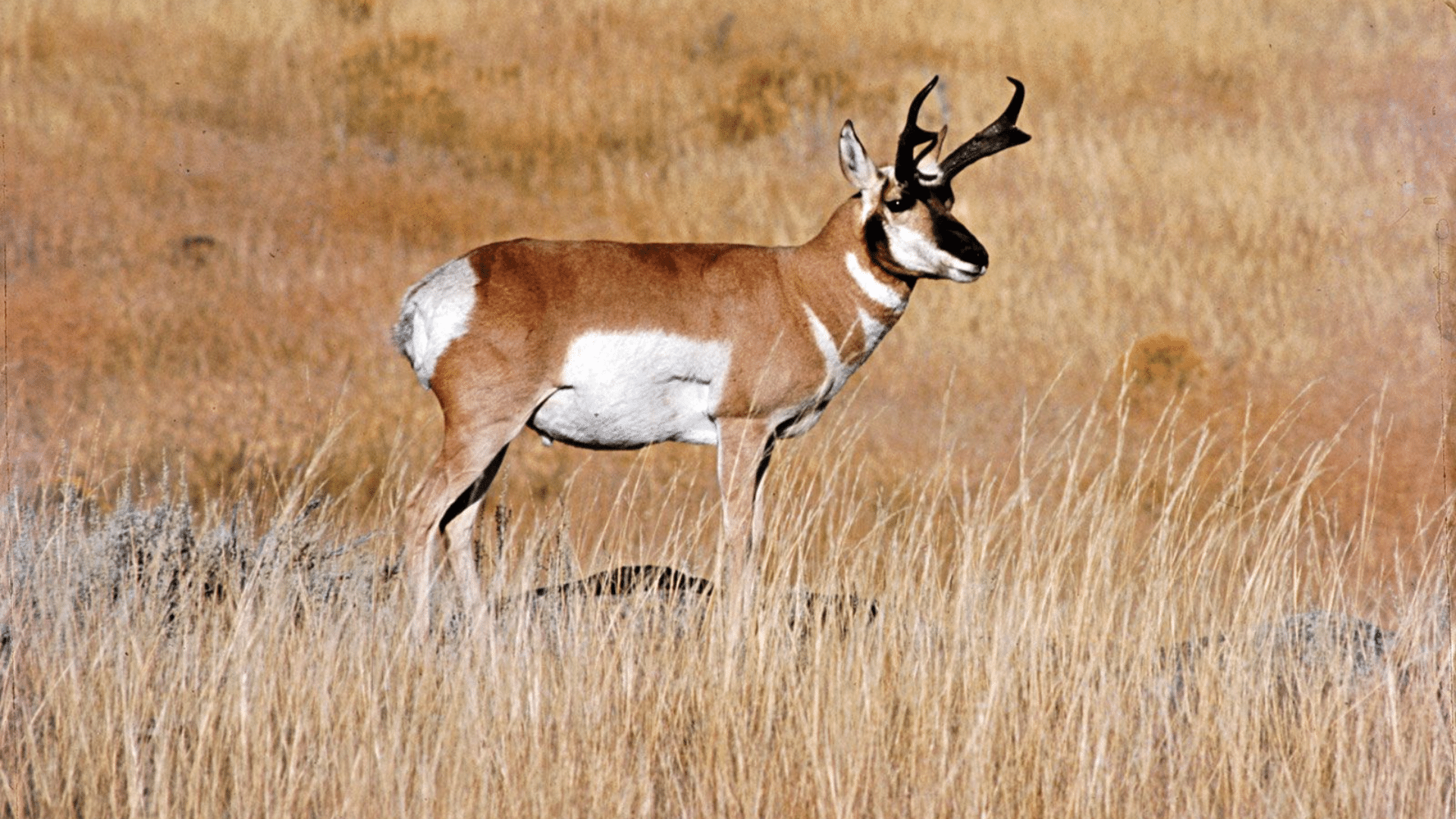
The pronghorn, North America’s speedster, can reach 55 mph, outrunning most predators. Unlike true antelopes, they have unique, branched horns. These agile herbivores roam open plains and deserts, relying on sharp vision and speed for survival.
- Species: Antilocapra americana
- Scientific Name: Antilocapra americana
- Food Habit: Herbivorous – feeds on grasses, shrubs, and forbs
23. Saiga Antelope
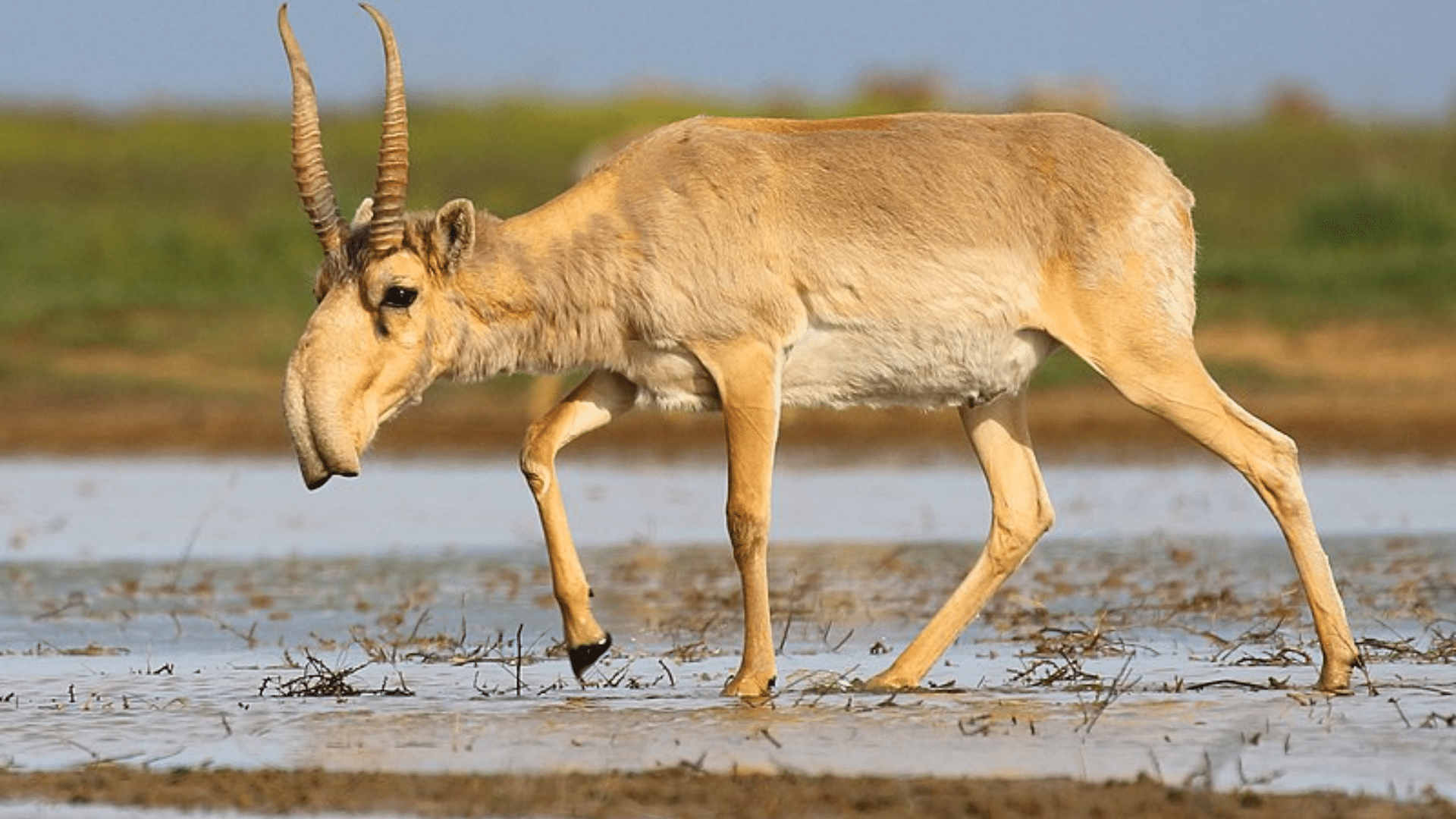
The saiga antelope is a critically endangered species known for its distinctive, oversized nose. Native to Central Asia, it helps filter dust and regulate body temperature. This resilient grazer faces habitat loss and poaching threats, impacting its fragile population.
- Species: Saiga
- Scientific Name: Saiga tatarica
- Food Habit: Primarily herbivorous, feeding on grasses, herbs, and shrubs
24. Scimitar Oryx
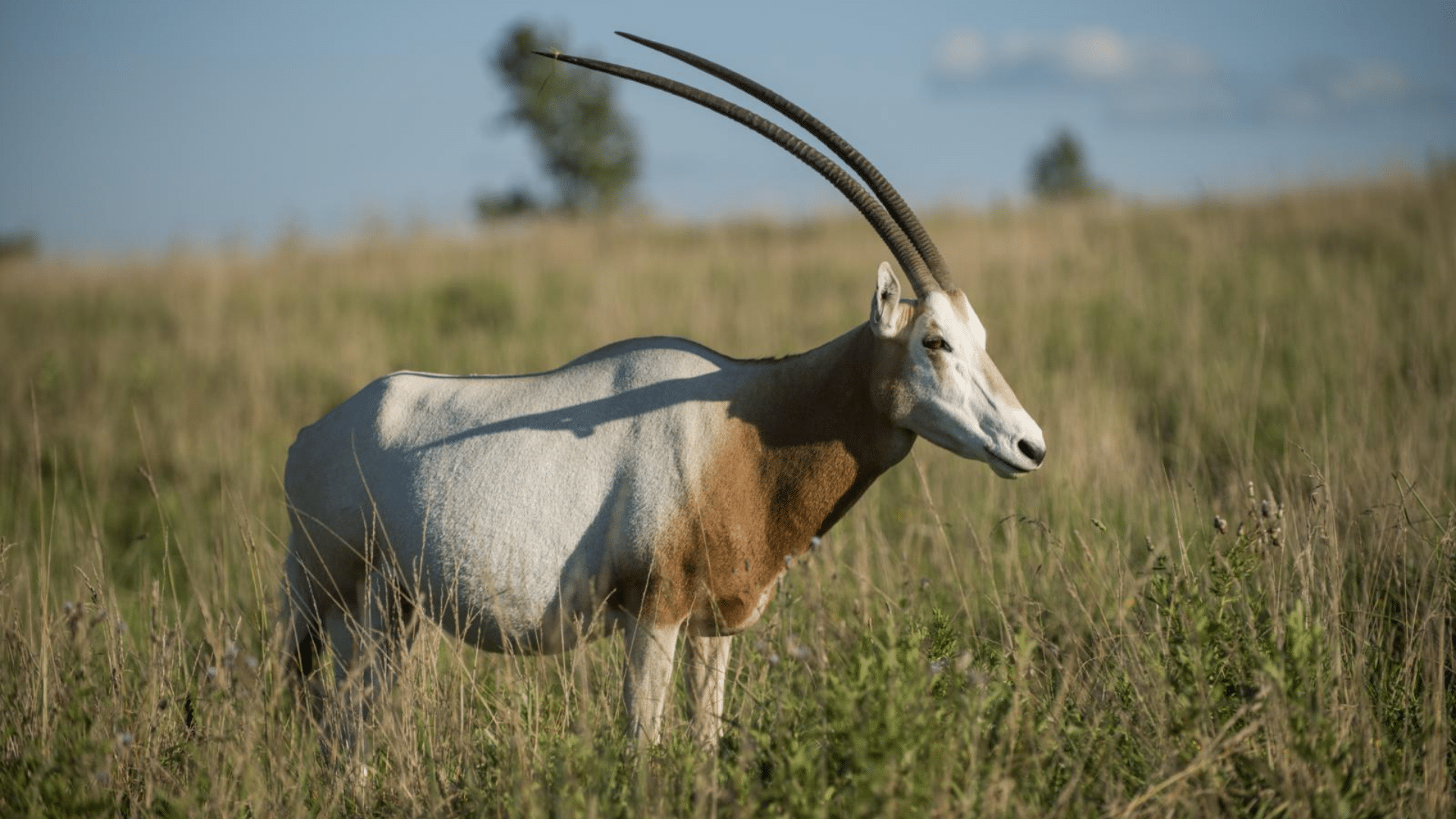
The Scimitar oryx, once extinct in the wild, is a striking antelope with long, curved horns and a white coat. Native to North Africa, it thrives in arid environments and has been successfully reintroduced through conservation efforts.
- Species: Oryx
- Scientific Name: Oryx dammah
- Food Habit: Herbivore – feeds on grasses, herbs, and drought-resistant plants.
25. Springbok
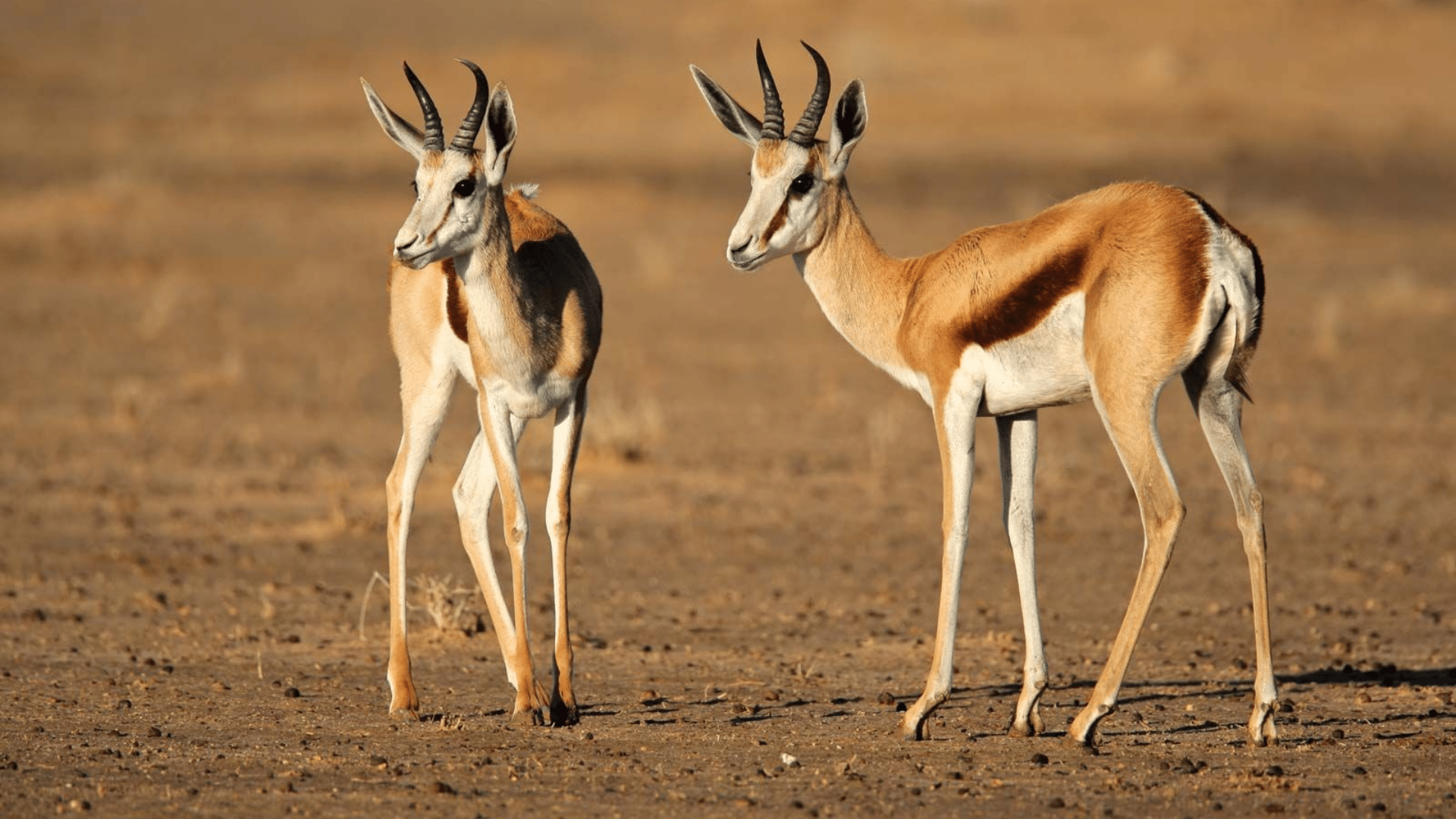
The springbok, a graceful antelope native to southern Africa, is known for its incredible speed and pronking leaps. With a sleek coat and distinctive white face markings, it thrives in arid regions, adapting to harsh environments with remarkable agility.
- Species: Antelope
- Scientific Name: Antidorcas marsupialis
- Food Habit: Herbivorous – feeds on grasses, shrubs, and succulents, often obtaining moisture from plants instead of drinking water.
26. Suni
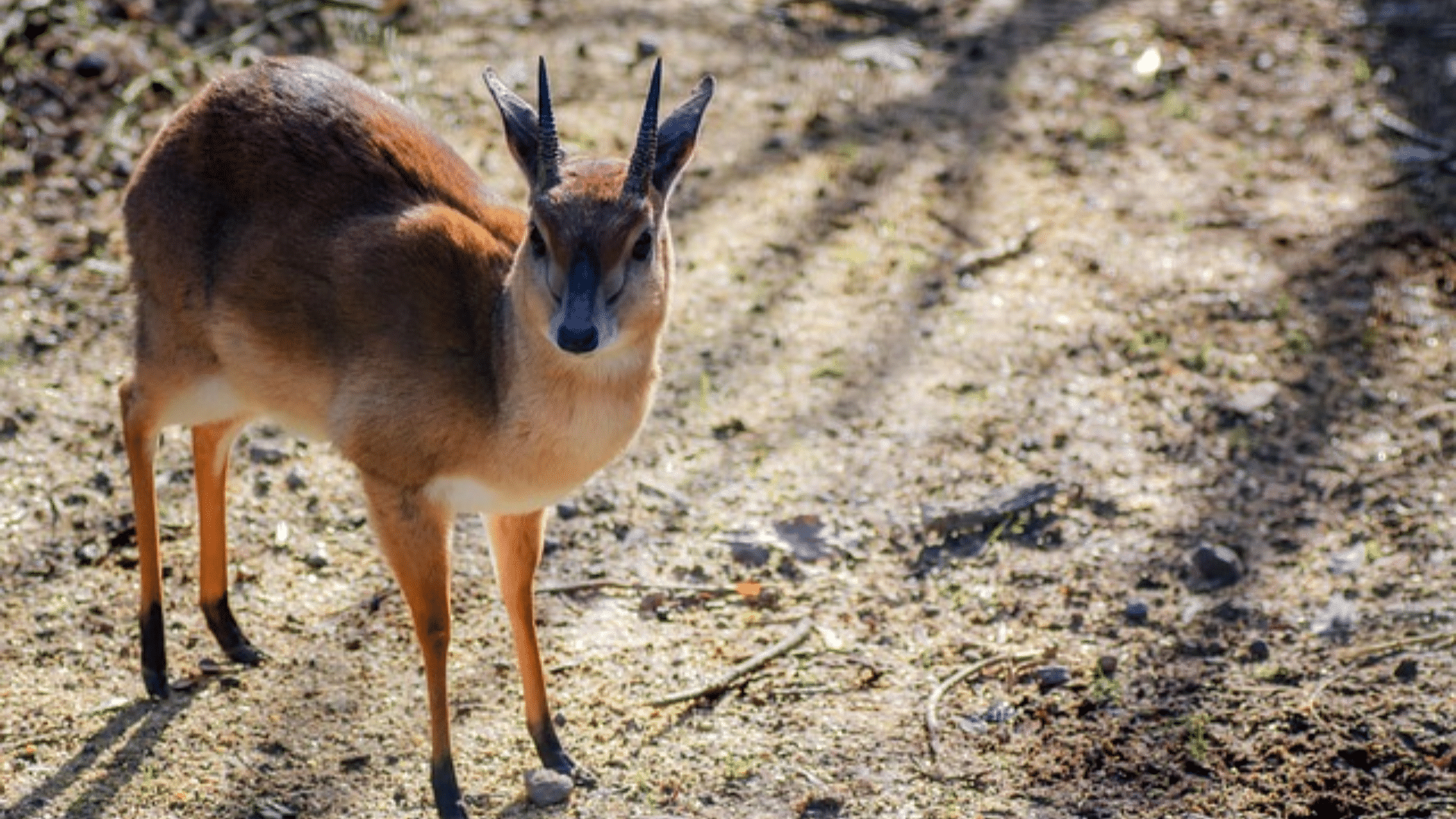
Suni are small, shy antelopes native to eastern and southern Africa. They thrive in dense forests and thickets, using their agility to evade predators. With a reddish-brown coat and large eyes, they blend seamlessly into their surroundings for protection.
- Species: Antelope
- Scientific Name: Neotragus moschatus
- Food Habit: Herbivorous – primarily feeds on leaves, fruits, and flowers.
27. Takin
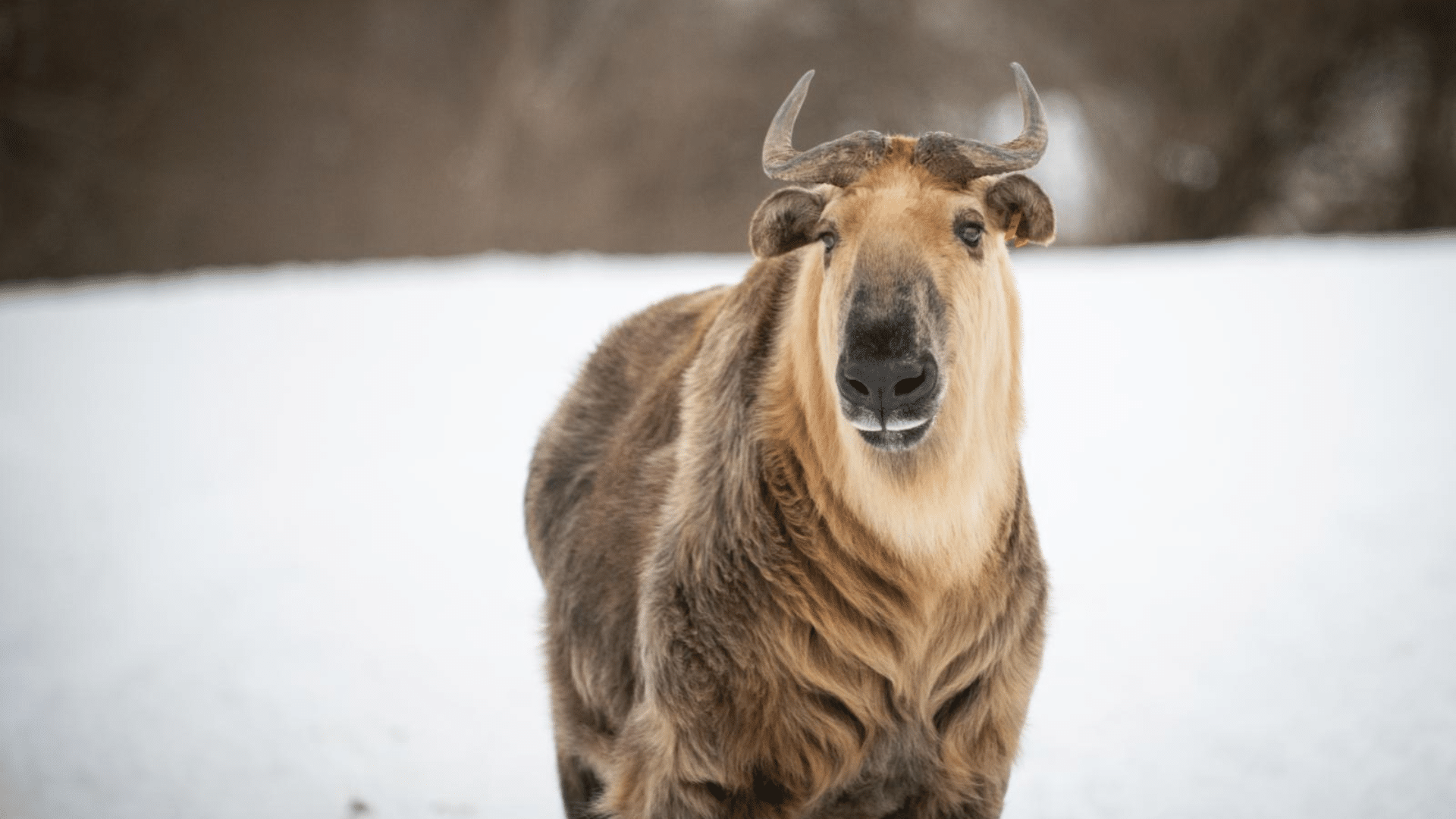
The takin, a stocky, goat-antelope hybrid, roams the rugged mountains of Asia. With a thick golden coat and a moose-like nose, it thrives in steep terrains. Known for its agility, this elusive herbivore navigates rocky slopes with surprising ease.
- Species: Sichuan takin, Bhutan takin, Golden takin, Mishmi takin
- Scientific Name: Budorcas taxicolor
- Food Habit: Herbivore – feeds on grasses, leaves, bamboo, and shrubs
28. Thomson’s Gazelle
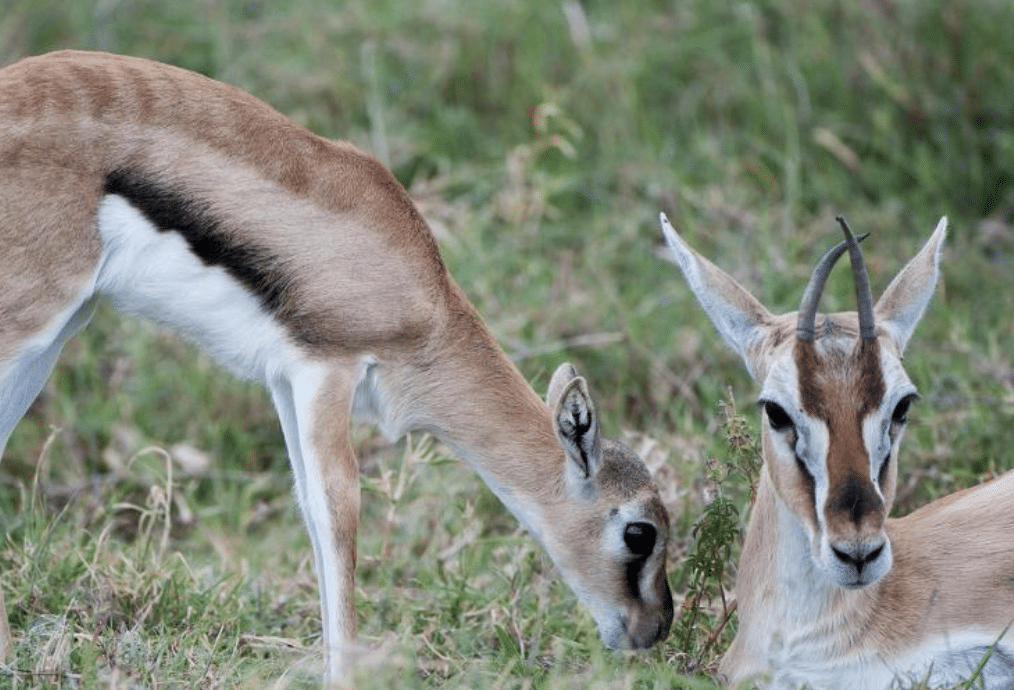
Swift, agile, and always on high alert, Thomson’s gazelle is a master of the savanna. This small antelope, known for its striking tan coat and black side stripe, relies on speed and sharp turns to evade predators.
- Species: Thomson’s gazelle is a type of antelope found in East Africa.
- Scientific Name: Eudorcas thomsonii
- Food Habit: Primarily grazes on grasses but also nibbles on shrubs and herbs when necessary.
29. Topi
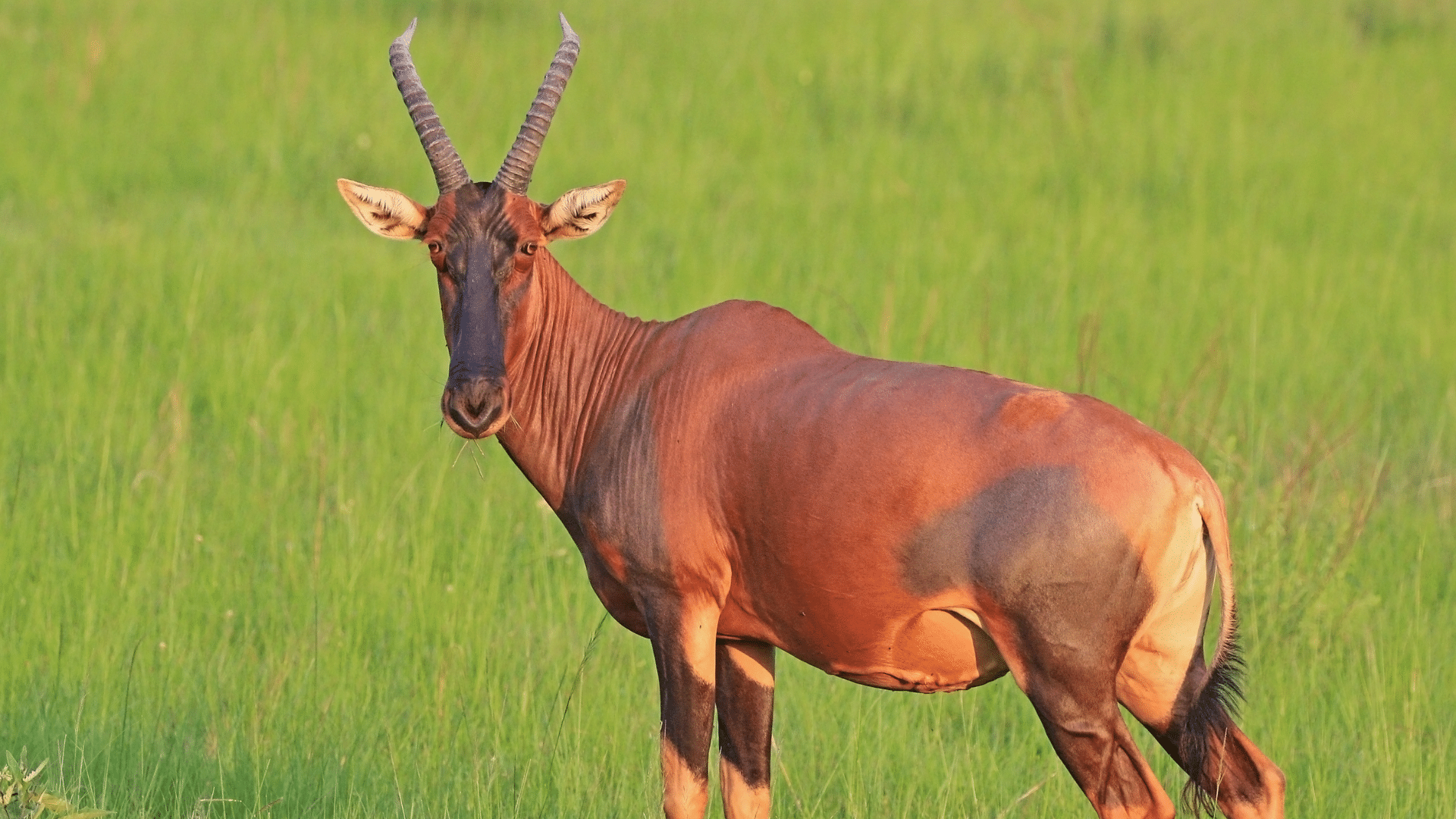
30. Wapiti
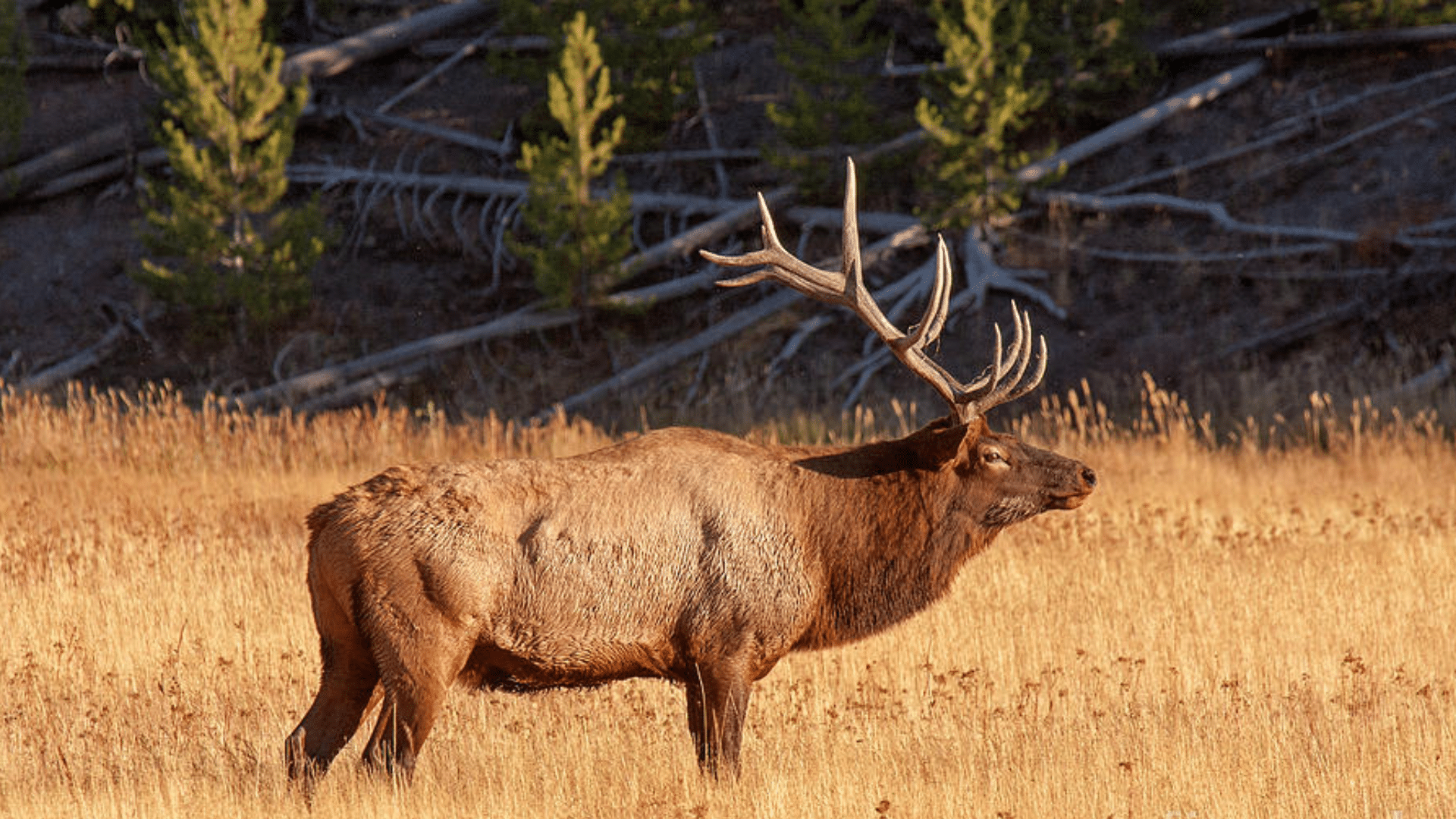
Wapiti, also known as elk, are large deer native to North America and eastern Asia. They boast impressive antlers and thrive in forests and grasslands.
Social animals, they form herds and communicate through distinctive bugling calls during the mating season.
- Species: Wapiti belong to the Cervidae family, closely related to red deer.
- Scientific Name: Cervus canadensis
- Food Habit: Primarily herbivorous, they graze on grasses, shrubs, and tree bark.
Other Horned Animals
31. Waterbuck
32. White-Bearded Wildebeest
33. White-Lipped Deer
34. Yak
35. Yellow-Backed Duiker
36. Roan Antelope
37. Red Hartebeest
38. Sable Antelope
39. Spanish Ibex
40. West Caucasian Tur
41. East Caucasian Tur
42. Mountain Goat
43. Addax
44. Bharal (Blue Sheep)
45. Bushbuck
46. Cape Buffalo
47. Chinese Goral
48. Giant Eland
49. Reeves’ Muntjac
50. Lowland Anoa
51. Mountain Anoa
52. Lesser Kudu
53. Zebu
54. Japanese Serow
55. Klipspringer
56. Beira Antelope
57. Black Wildebeest
58. Bontebok
59. Hartmann’s Mountain Zebra (Males)
60. Pyrenean Chamois
61. Western Derby Eland
62. Eastern Derby Eland
63. Javan Banteng
64. Gaur (Indian Bison)
65. Persian Ibex
66. Nubian Goral
67. White Rhino (Males & Females)
68. Black Rhino (Males & Females)
69. Indian Rhino (Males & Females)
70. Sumatran Rhino (Males & Females)
71. Javan Rhino (Males)
72. Forest Buffalo
73. Golden Takin
74. Sichuan Takin
75. Bhutan Takin
76. Mishmi Takin
77. Tibetan Antelope (Chiru)
78. Red Serow
79. Sumatran Serow
80. Burmese Serow
81. Himalayan Serow
82. Capricorn Beetle (Insect with horn-like mandibles)
83. Hercules Beetle (Males)
84. Japanese Rhinoceros Beetle (Males)
85. Atlas Beetle (Males)
86. Indian Gaur
87. Maned Goat
88. Kordofan Giraffe (Ossicones resemble horns)
89. Reticulated Giraffe (Ossicones resemble horns)
90. Masai Giraffe (Ossicones resemble horns)
91. Okapi (Ossicones in males resemble horns)
92. Caucasian Bison
93. Wood Bison
94. Carpathian Chamois
95. Dama Gazelle
96. Slender-Horned Gazelle
97. Mongolian Gazelle
98. Tibetan Gazelle
99. Przewalski’s Gazelle
Wrapping Up!
From the rugged highlands to scorching deserts, these horned wonders have shown remarkable resilience and adaptability.
Each species, with its unique set of horns, tells a story of survival, evolution, and nature’s endless creativity. While some of these magnificent creatures face challenges from habitat loss and human activities, many conservation efforts are underway to protect their future.
Whether it’s the massive horns of the Marco Polo sheep or the delicate spikes of the Jackson’s chameleon, these animals remind us of the incredible diversity that exists in our natural world.
The next time you spot a horned creature, take a moment to appreciate the remarkable features that make them stand out in the animal kingdom.


